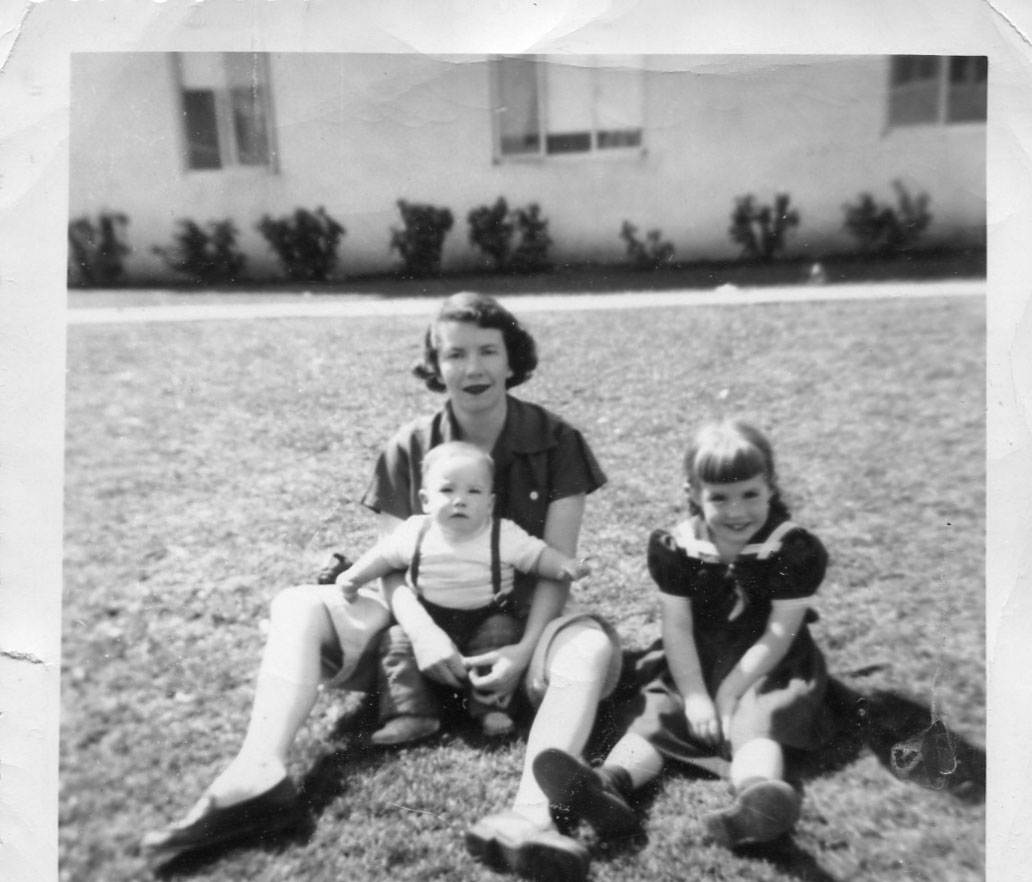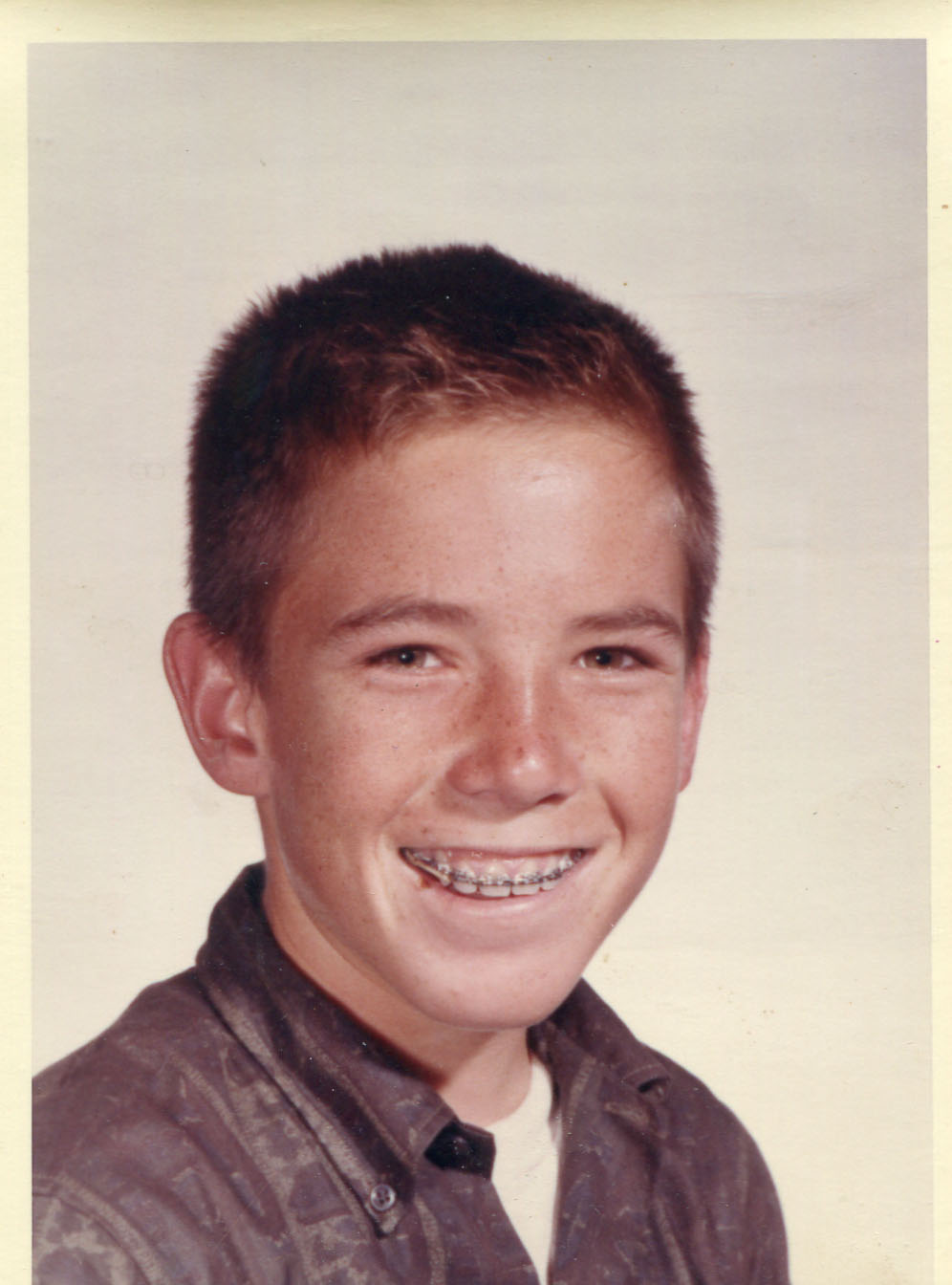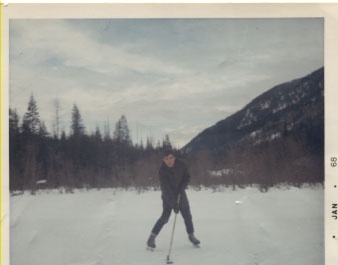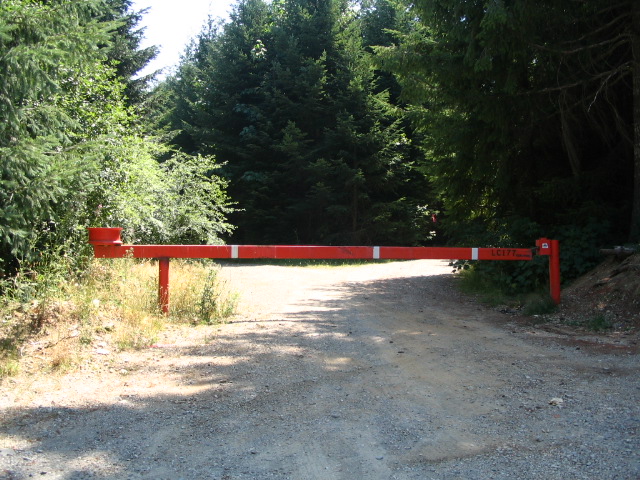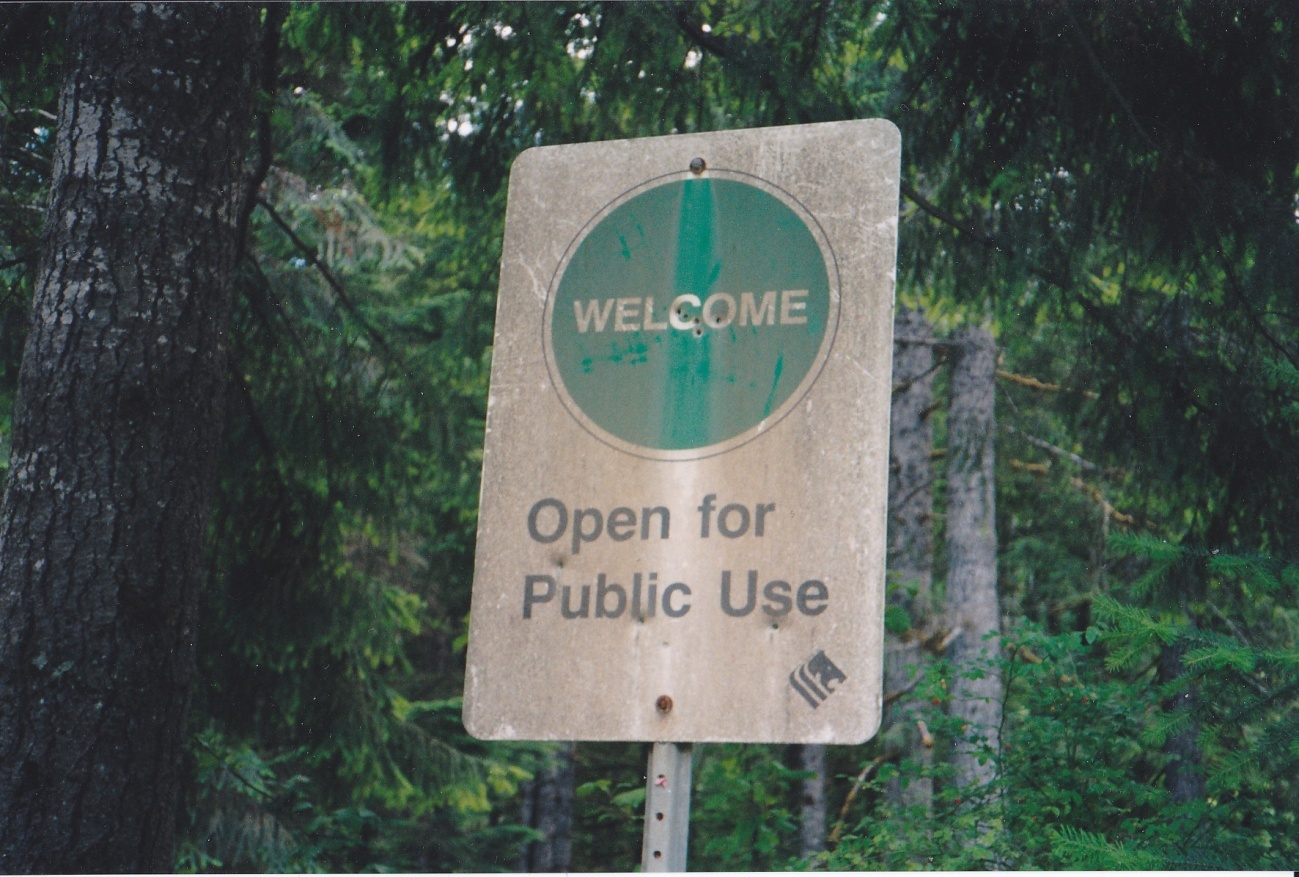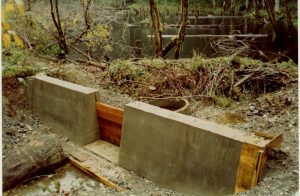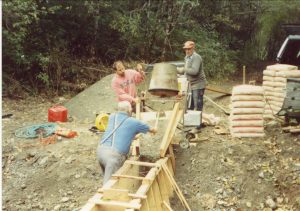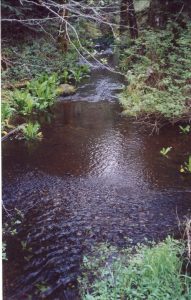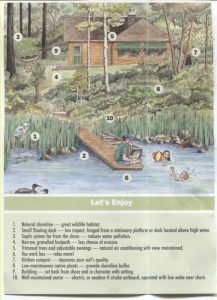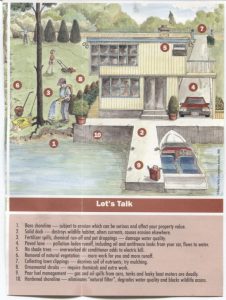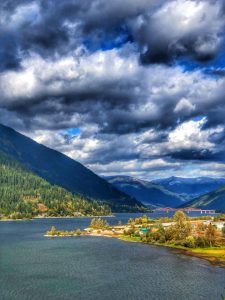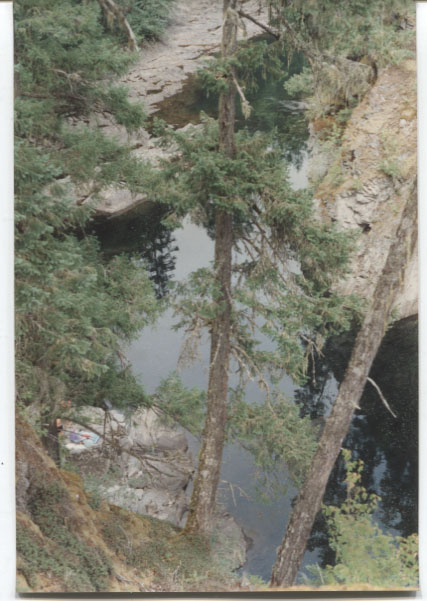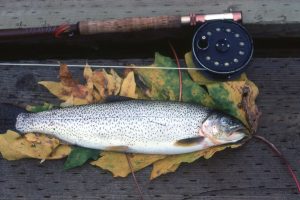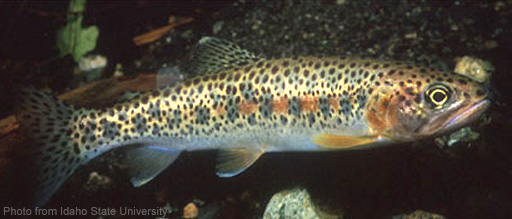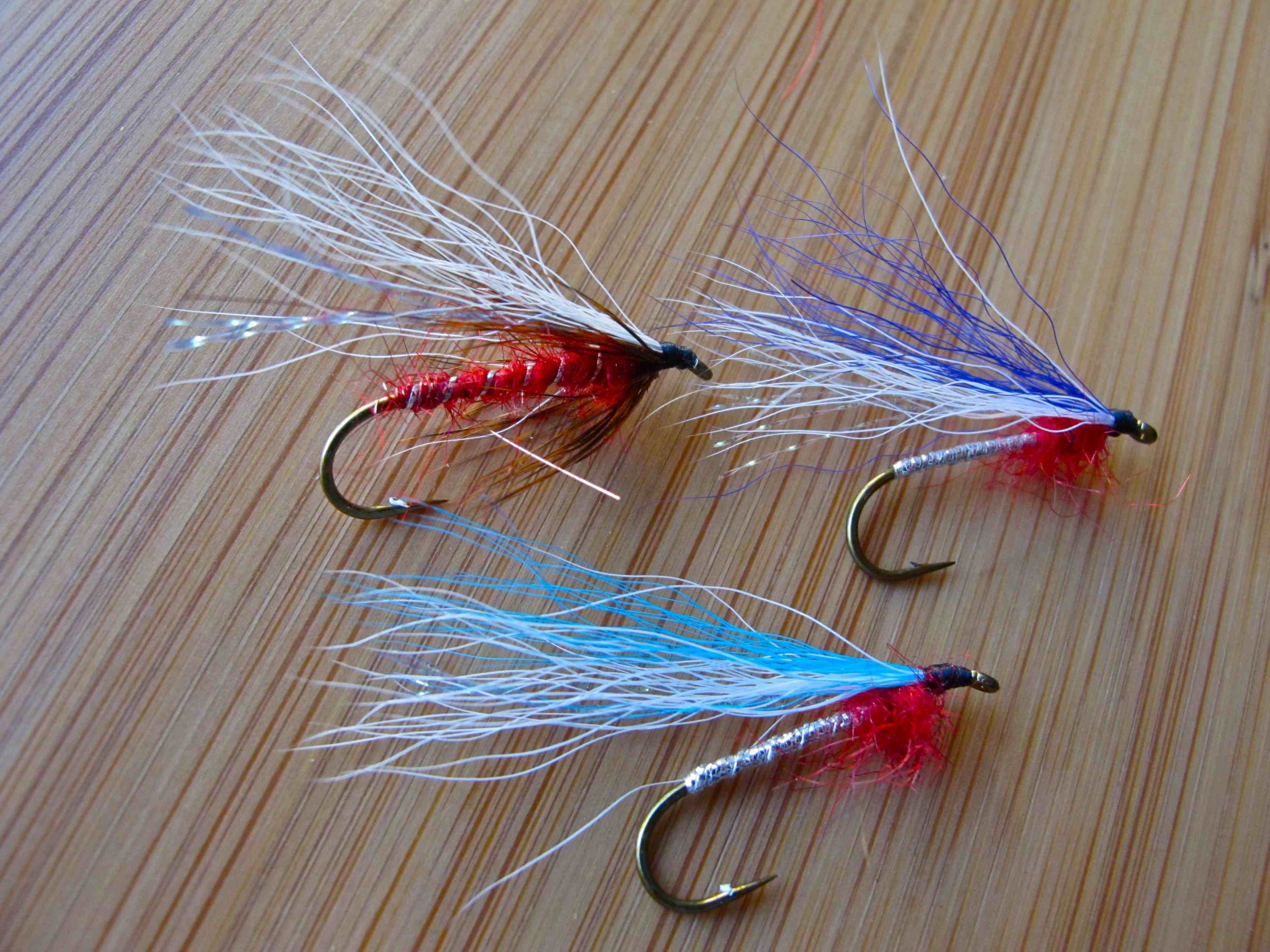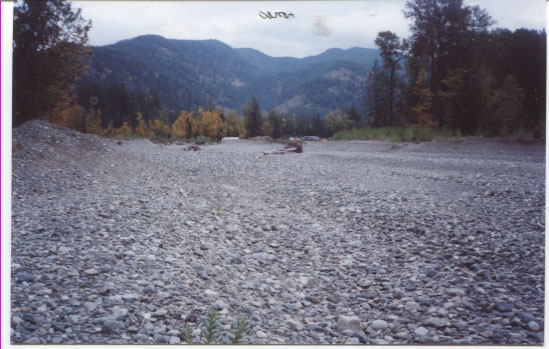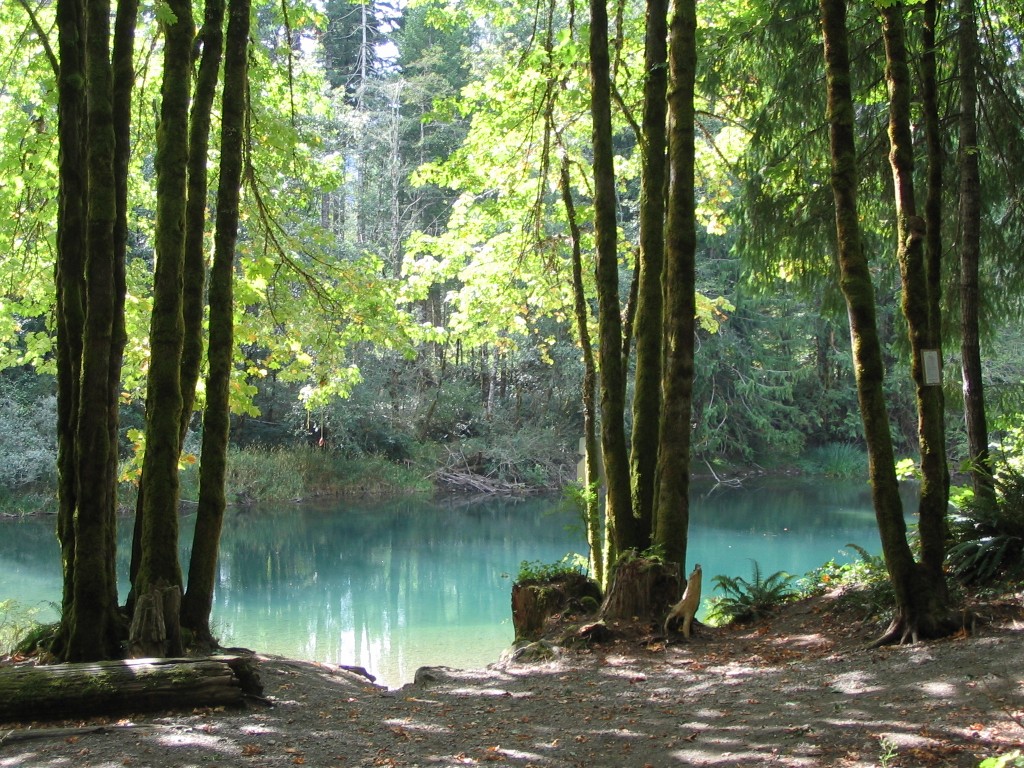Notes on the History of the Burns Family
Jean Burns Moore
1993
John Burns and my mother, Rose were married about 1909 and went to Victoria on their honeymoon. My father’s family were Scotch Presbyterian and my mother’s were French Catholic (Rose probably had some Indian ancestors as did the Bill Desjardin’s family). There were very strong religious prejudices at that time and mother was not made to feel welcome by the Burns’ tribe. She never forgave them.
Nelson is rather off the beaten track, so of necessity he and his father accumulated their own lumber yard, sash and door factory- where they did all the necessary manufacturing and assembling of windows, doors, cupboards and all millwork. Also owned their own marble and granite quarries and a brick yard.
Dad’s brother Harry and wife Mildred and two sons, Gordon and Bill later moved to Nelson. Harry had a lumber mill at Taghum five miles west of Nelson and a retail store in Nelson. He held the first Forest Management licence in the interior. It was a very successful operation which they eventually sold.
Harry and dad were very close and he was a frequent visitor. Mildred tried to warm up to mother. She would invite for Thanksgiving, Christmas or whatever but my mother never accepted. My cousin Bill and I were close in age and friendly. Harry and Mildred were very kind to me and I was fond of all of them but my mother’s cold remoteness made us all uncomfortable.
I had three brothers: Robert John, John Wallace and Edward James. I was number three in appearance and my mother wanted to get away from the Scottish names. She wanted me to be called Marie Eugenie. They considered naming me Ypres since I was born on the eve of that World War I battle in France. When it came time to register me at the court house, dad couldn’t spell Eugenie let alone pronounce it so he registered me Mary Jean. Everyone called me Jean so I had it changed to Jean Marie when I was 18. I was born in our first home on Carbonate Street. It was a two story house with a full basement. Our homes were heated by a central furnace which burned wood and coal. Every house had a coal shed or a coal bin in the basement. The coal was delivered from the outside via a coal chute then broken up in the basement. This created a lot of black, sooty dust and each delivery necessitated extra housecleaning.
Had a barn entered from an alley behind the house. The barn housed our horse and his carriage and winter sleigh. Also a cow and some chickens. Even in the city one was awakened by the rooster’s crow.
My paternal grandparents were three doors from us and I was a frequent visitor mainly fore the cookies and ginger ale. Grandfather was big man at 6 feet, four inches, he died in 1916. I spent a lot of time at grandma’s and when I was about 3 to 4 years old, I stole her little metal pig which held the wind up key to her clock In my haste to make a quick getaway, I fell and broke piggie’s curl tail off. I was duly caught and scolded. Since I was the only girl in both families, I was petted and spoiled and made the best of it.

Burns family: Left to right. Father John, Jean, Robert with Ted in front, jack and mother Rose
I was born in our first home on Carbonate Street. It was a two story house with a full basement. Our homes were heated by a central furnace which burned wood and coal. Every house had a coal shed or a coal bin in the basement. The coal was delivered from the outside via a coal chute then broken up in the basement. This created a lot of black, sooty dust and each delivery necessitated extra housecleaning.
Had a barn entered from an alley behind the house. The barn housed our horse and his carriage and winter sleigh. Also a cow and some chickens. Even in the city one was awakened by the rooster’s crow.
My paternal grandparents were three doors from us and I was a frequent visitor mainly fore the cookies and ginger ale. Grandfather was big man at 6 feet, four inches, he died in 1916. I spent a lot of time at grandma’s and when I was about 3 to 4 years old, I stole her little metal pig which held the wind up key to her clock In my haste to make a quick getaway, I fell and broke piggy’s curl tail off. I was duly caught and scolded. Since I was the only girl in both families, I was petted and spoiled and made the best of it.
I don’t have too many memories of our Carbonate Street house. The toilet was in a separate room from the rest of the bathroom. On occasion. I locked myself in and couldn’t open the lock and became panic stricken. He whole tribe assembled outside the door shouting instructions to no avail. My father finally up a ladder and climbed to the second story window which was fortunately unlocked. I was in there quite awhile because he was at work.
A neighbour boy named Beverly Caverhill threw a rock and hit me on the forehead at the hair line – I bled profusely. His mother was mortified and gave me a big consolation box of chocolates. I still have the scar. I played with two little girls a couple of doors away named Hazel and Stella. We nicknamed them Oggin and Woggin for reasons unknown. We played the usual kids’ games like hop scotch, skipping rope, run sheep run, sledding and double runner skating on the steep and icy streets. Our horse was named Buster – a sturdy maintain pony but not too speedy.
About the time I was two, my parents bought a vacation home across the lake near where the Murphy’s later lived. Naturally I fell off the wharf first thing. We spent most of our summers there and later bought the present North Shore home – about 40 acres. It was formerly a fruit ranch, originally called the Hoover Ranch. \we acquired it from a Captain McClain, a widower with two grown daughters. These homes could only be reached by boat. There was no power or telephone. Plumbing was an outhouse and we used coal oil lamps.

Burns summer home across the lake from Nelson
The original brick house was one large room plus a kitchen. A screened sleeping porch was added also a two room screened sleeping shack. There was a trap door in the kitchen and stairs going down to the basement where we kept a cooler and screened cupboard for semi perishables. In the main room we had an ice box and dad hauled ice over in big chunks. If the weather was nice we stayed on in September and rowed back and forth to school. Dad built the big porch across the front himself.
Sometimes at night, I could hear the forest animals behind our shack. I hid under the covers sure that they would drop in any minute through that flimsy screen and devour me. Many animals came down to the lake for a drink in the evening. There were lynx, cougar, bear, deer and bobcat.
A recluse named Coal Oil Johnny (since that’s what he sold to make a bare living) built a cabin on the mountain near our water spring. We did not charge him rent for squatting there. After he died, dad gave Jack the cabin. They were into cigarettes by that time and managed to burn it down one night. He forestry department and the volunteer fire brigade were not pleased. It made a spectacular fire plainly visible from the town side of the lake.
To keep the younger children from the water, my father built a fence about a block long. This was a waste of time. We were forbidden to go down there unless accompanied by an adult or our older brothers. Ted and I were past masters of getting over, under or around that fence. One day we were playing on the wharf and Ted’s little sail boat got away. When he tried to retrieve it with an oar, he fell in. The water was about 6-7 feet deep, Ted was 4. He managed to get out by himself. I kept trying to get him to grab the oar. When we went up to the house, he was soaking wet – my mother almost fainted. When she asked him how he got out, he said he said that he just kept walking along the bottom until his head came up – took a breath and then back down to continue walking his way up the beach. We were water wise.
Most of my friends went to public schools but we all went to the convent. Bob took me the first day. Mother was busy with baby Ted. It was only a couple of blocks away from our town home so after that, I went to and from by myself.
I don’t remember when dad bought our first car, a McLaughlin Buick. I can still remember our horse and carriage and the sleigh in winter. I can still smell those buffalo skin lap robes which we also used in the car in the winter since they only had those izon glass windows which we fastened on. There were few cars – the winter roads were mainly impassable for those skinny tires.
We all learned to swim when we were quite young. Mother learned when I was about six; she did a slow breast stroke. Not sure if she could have rescued us if needed. Dad was a strict teacher – we were safety conscience.
Mother did not learn to drive a car until her late 40’s. She usually proceeded cautiously at 5-10 mph. Since dad was in town during the week, he did most of the shopping. We usually came in Saturday to shop also.
My mother was fond of clothes and usually well dressed. She bought a lot of our clothes in Spokane. She sewed very well, she even made hats. I had a black sateen dress embroider with ducks, flowers and such with matching panties that I loved. She copied it in taffeta and I wore that for good occasions like Sundays, teas or other social events. I was 8-9.
In a small town, you make your own fun. There were lots of parties, teas and dances. My mother loved to dance – my father was less enthused.
Our winters were long and cold. I wore long under wear to school. Girls did not wear slacks. We folded the underwear and tucked into the stockings and the high top, laced or buttoned shoes with a button hook. The rooms were steam heated but one side was always cold.
Shortly after I started school, we moved into a big house at 820 Stanley Street – The Madden House after the hotel people. My mother had a lot of fun doing it over although it was fine as it was. Dad was also an architect so worked out a design that suited her. Now the entry is at the side in the front and the stairway goes up from the den with two turns and landings. Original entry was center front and the stairway went straight up from the entry hall. She added a bath downstairs.
At Christmas time, everyone had a live tree. You could cut one any place, there were zillions of them. We used little candles in holders that clipped onto the branches. Ted leaned too close once and caught his hair on fire. He was a tow head and mother, wanting another girl, kept him in a buster brown haircut with bangs.
The sisters were big on drama. We had a parish hall with a stage and each year we put on a play. All ages participated. I was once a fairy queen and wore a long yellow organdie dress with a train and had to sing a solo. Another time I was airiest, an Indian Maid and an Irish milk maid. The boys only attended the convent until the eighth grade and then went on to the public high school. One of the high school girls was a good looking red head named Josephine who was playing the part of Father Marquette who had a mission and mainly his time trying to convert the Indians. In this scene “he” he was supposed to be landing the canoe at their village. Josephine forgot to button her cassock all the way and she brought the house down when a lot of leg and thigh were revealed when she tried to step out of the canoe.
Each spring we prepared to move across the lake for the summer. Our place was directly across from town – about a quarter mile. The move included daisy our cow. The first time dad rented a barge and towed her over. She didn’t like that at all. So thereafter dad and the boys took her through town to the ferry (some two miles) crossed her then bush wacked another two miles over some rough country to our place
We had two black water spaniels Mutt and Jeff. We towed them and some supplies in a rowboat pulled by our launch. One year the lake was very stormy while we were crossing and the row boat overturned. Dad set it loose then took us to shore. He then returned for the boat. We children were all crying because we knew our dogs had drowned. These smart rascals knew there was an air space and sat quietly on the underside of the upturned seat. They knew somebody would pick them up. We also had some chickens and rabbits which also had to be transported. Ted had a pet bantam rooster that followed him everywhere. He carried it around in a bucket. The rooster finally drowned in the cow’s water trough.
Water was always a problem. Our source was a spring by the path that goes up to Pulpit Rock above our first lakeside house. The pipes were above ground or buried shallow so they froze each winter. Every spring we went along the line replacing joints and connectors that burst or were leaking. We had a wooden storage tank near the orchard and it too had occasional leaks.Some years there was a water shortage and we couldn’t have a garden. WE had lots of fruit trees: apples, cherries, peaches and plums as well as berries like strawberries, raspberries, currants and gooseberries. There were huckleberries in the woods. Mother usually had flowers. We rowed over to The Chinese vegetable garden directly opposite us on the CPR Flats. So named because it is one of the non-hilly areas of Nelson – most of which is steep, rising abruptly from the lake. The CPR had a round house and repair shop there. We could safely roam anywhere on our 45 acres. Lots to do – hunting, fishing, hiking, swimming and boating. The older boy’s friends were often at our place. They came by boat. But I had no one to play with so I attached myself to them and they were eternally trying to ditch me. On one occasion I invited myself to go mountain climbing. Crossing a steep cliff they were going to climb down to a narrow ledge. “Ladies first” and they carefully lowered me. They left me there and went up to the top of the mountain. I was forced to wait until they decided to come back and haul me back up.
We dressed up and came to church on Sundays. We had a motor launch, an outboard, a rowboat and a rowing canoe and spent most of our time in or around the lake. In the fall we returned home and the lake house was shuttered and closed. It was strictly a summer house – no central heat. A few times when the lake froze, we skated across and brought a lunch. Our kitchen stove was a wood burning range. When the lake was frozen we sometimes went ice boating. The boat was equipped with skate- like runners and a sail. It ran very fast and was difficult to navigate on the slick ice – really dangerous. My dad would ordinarily not let me do it but his long time bachelor clerk built a really neat one and I went many times – very fast. Lawrence was good looking, shy and spoke with a lisp but very trustworthy.
Living in such a wild environment we became familiar with death at an early age. My best friend Veronica, age 7, died of pneumonia. Victoria – same age- drowned in the creek that ran by their house. All were laid out in coffins for us to view and they looked terrible. Someone was always drowning in the summer or falling off a cliff or going through the ice on the frozen ponds. Ours were not man- made but natural hazards.
One day when Jack was picking huckleberries, he came upon a young bear cub in the forest and brought it home much to the consternation of Mac, our collie. Dad made him take it back to where he had picked it up; saying mother could be along any minute. From then on Jack acquired the nickname of ‘cub’.
We all skied. Our skis were turned out in dad’s factory. The bindings were a simple strap across the top of the foot and one around the heel. There were no ski hills or rope tows. We often hiked up to the old Silver King mine, and then skied down the road which was a series of switch-backs and horseshoe turns. We used one pole – which was just that – a sturdy branch.
There was a community of Doukobours not far from Nelson. These were Russians who rebelled against Lenin’s tyranny. They lived on communal farms with multi-family housing. Whatever produce they produced wheat, cattle, whatever – everything was shared. They came into town every Saturday and had produce stalls on Vernon St.
They objected to sending their children to school and would stage protest parades – naked. They tended to be obese, and had their own language and religion. They would occasionally blow up a rail-road bridge as a form of protest.
When their leader died, they wrapped his body in hundreds of yards of blue silk. They posted 24 hour guards at this tomb, so that the devil couldn’t come and steal the body.
I played soft-ball and basketball, the latter at the Parish hall during our gym period. We were bloomers for gym, which are like full cut pedal pushers gathered below the knee. We played badminton all winter and tennis in the summer. The boys played hockey, rugby, basketball and hunted and fished. I was the only one who played golf, which seemed a sissy game to them.
A lady barber used to cut my hair. There was one beauty shop in town where they did permanents etc. and I didn’t need that. This lady was a confirmed gossip and I grew to dislike her so I asked mom if I could cut my own. She laughed and told me to try it – nothing to it.
The main part of Kootenay Lake was about 100 miles long; Nelson was on the West Arm about 20 miles from the Min Lake. Just below our house the channel narrowed and the lake became a river. We could feel the current flowing past our point. The main beach, boathouse and dock were in a protected bay and we were not much affected by the current except at high water. Wind could generate huge waves on the Main Lake. Even at Nelson, a small vessel had better make for shore in a storm. My father was very strict about safety procedures around boats and docks.
One does not remember events sequentially so this whole narrative is rather disjointed. An Indian family came to our shore in a birch bark canoe and asked permission to camp on our land when they picked huckleberries. Mother gave them permission to use the site later sold to Dan and Dee (Desjardins) McKay. I was 5 or 6 and watched them from a distance, put off by their strange garb and appearance. But the boys helped tem cut the poles and erect their tepee. They were friendly and spoke English.
Indians must have resided on this property in the past. Bob showed them his flint collection. He also found a stone mortar. They used a mortar and pestle to grind their grain into flour. Bob was fascinated at an early age by the earth’s geology and was eternally searching and collecting rocks, shells and such along the shore. Forgot to mention how religious differences affected our lives. Dad went along with we children being raised Catholic and contributed a great deal to the school and parish – he built the convent. The nuns used our place across the lake for a retreat and our cars were often at their disposal. However, mother never ceased trying to convert him and it really was a constant source of friction in our house. Non-Catholics are not supposed to be buried in Catholic consecrated ground but my dad is buried there.
Dinty has a similar experience in his upbringing – two opposing religions to content with. So when we got married we wished to present a united front and chose a neutral religion – Episcopal. Our church was not too far and the children went to Sunday school for whatever benefit they derived from that. None are very religious but that may change as they see the end looking up.
My dad’s mother was Anne Buchan. Her brother’s son, John Buchan was appointed Governor General of Canada by the British Crown in 1935. I was training in Denver at the time I think it was extremely odd that I was not informed that father’s cousin was the Governor General until Uncle Harry wrote me. John was also an author and wrote “The 39 Steps” from which Alfred Hitchcock produced a movie. John was called Lord Tweedsmuir and Tweedsmuir Park in BC’s Chilcotin country was named for him.
The park was established in 1936 with approximately 3.5 million acres or 5400 square miles. National Geographic April 1938 issue has a 26 page article about the park written by Lady Tweedsmuir. There are many pictures. She states that the park is for the most part a high table land with an average elevation between two and three thousand feet most of it is a mosaic of noble lakes. I have that National Geographic issue if anyone would like copies.
Dad built a little rustic cedar summer house at the point and we frequently built a fire and had our dinners there. At night the reflection of the lights of Nelson on the water was beautiful. The CPR ran along the lake on the town side and the main highway was above it. All of us on the North Shore kept our boats in boathouse reached by wooden floats. Dad bought an old house near the waterfront on the Nelson side and used it for a garage and storage space.

The little cedar shelter at the point often used for sleeping and tea parties
As we got older, we could row or take the outboard over town to go to the movies, a ball game or play tennis. Sometimes we took the street car to Lakeside Park. By age 14, I was on the tennis team and by 15; I was driving to nearby towns for tournaments.
Like most teenagers we were restless and dissatisfied with the status quo. My father sold his construction business in 1929. He and mother decided to build a summer resort at Ainsworth Hot Springs. Ainsworth is on the Main Lake some 28 miles from Nelson. They built a hotel and swimming pool and cottages. In order to prevent others from tapping into the hot springs, they had to buy up quite a bit f the town. Since it is only open in the summer, it wasn’t a very lucrative investment. There was a silver – lead ore vein under the property so they eventually sold it to a mining company.
I was 14-15 at the time. They did not spend much time across the lake that summer but we teens did. One night Gerry Dennison and I decided to we would go tom the rowing club dance. The clubhouse is a floating building. Everyone wore formals and we smuggled our across the lake. We are now 16-17 and the club members are all adults. We had a great time. About 11 PM, a fire broke out on Baker Street so we didn’t want to miss that so a group of us walked up. We sort of stood out in that crowd in our long formal dresses and who did we run into but Geryl’s parents. Disaster!
We had quite a few parties there. The glass tray on mother’s tea table was broken. I took it over to Angus McKenzie who ran dad’s millworks shop and he fixed it – no questions asked. Then my brother’s friends started snooping around and we decided to lock them out. In doing so the double hung window broke and dropped on Geryl’s hand cutting it badly. WE had to take her over town to have it stitched. Back to Angus to have the window glass replaced. He never squealed on us.
Started playing golf. My father owned a share in Country Club (helped build it) so I got to play free. None of my friends played so I played with the caddies who were kids I went to school with. By 15 I had a favourite boy friend. Very handsome with the very shiny, slicked down hair which was in vogue then a la Rudolph Valentino – the current movie idol. There was only one movie in town and it didn’t change shows too frequently so we were limited there. But lots of parties. My older brother and his friends had a band and played at dances and parties. Bob played the violin, Jack the saxophone and Ted the piano and trumpet.
In my earlier years there were few roads. What roads there were narrow and rough. They were mostly one-car wide. Whenever you met another car, one of the other would have to back up to the nearest turn out. The rugged winters were very rough on these dirt roads. The country spent all summer grading, repairing and filling pot holes. Then the winter came and tore them up again. Come spring back to the road repairs, detours, etc.
The Main Lake and West Arm were serviced by three paddle wheelers, the Nasookin, the Kuskanook and the Moyie. They handled all of the mail and freight and passengers that the trains didn’t.
I went to Cranbrook to visit friends. Ted drove me to Balfour where I took the Kuskanook to cross the Main Lake and my friends would meet me on the other side. My hat blew off the dock and the post-man retrieved it. He wore the standard mailman’s uniform, but went bare-foot all summer. Nobody cared!
Around town all of the freight, coal and wood were delivered by heavy drag-horses. The steep hills were very slippery and it was a long time before they were replaced by trucks. One winter a group of teenagers came speeding down the hill on a bob-sled about the time a horse and sleigh were crossing a lower street. They went under the horse and sleigh and all made it safely, except the last person – a girl- and the horse lost balance3 and fell on her. Instant death. Actually, one steep street was set aside for sledders, where a patrolman handled traffic. So they were sledding illegally. One of my older brothers’ friends came home drunk one night. Forgot his key so he settled down on the front porch – froze to death. It was not a forgiving climate.

We had funny papers then. The Katzenjammer Kids – were always in trouble. And their father was always spanking them and the mother standing by and saying “What did dey done?”Then there was Happy Hooligan, Maggie and Jiggs, Moon Mullins. Grandma took the Glasgow Herald and always saved it for me for the cartoons.
Bob went away to Gonzaga University in Spokane. He was there at the same time as Bing Crosby, then unknown. Next year he went to Santa Clara, a university in California where he became interested in Geology. He switched to the Colorado School of Mines at Golden, Colorado – about 12 miles from Denver. Jack decided he wanted to be a Mining Engineer, so he also went to the Mining School Ted went to a private school in Vancouver and then to Santa Clara.
In the meantime, I wanted to go somewhere to school but dad wanted me to stay home and get married and he would build me a house on one of his lots, but I was not ready for domestic life.
In June 1933, the year I graduated from High School, Bob graduated as a Geologist and came home with two of his friends from Mines: Sal Cavello from Seattle and Bubbles from New York. Radium had been discovered in the pitch blend at Lake Athabasca in Northern Canada. Radium was then worth $5000.00 an ounce. They decided to take a prospecting survey and possibly stake some claims. All three of them were geologists. They bought their supplies, including a seventeen foot canoe, in Edmonton, Alberta. They took the train north of there as far as it went – about 400 miles – into the North West Territories – which is North of Canada between there and the Arctic Ocean. There are three big lakes. Lake Athabasca, Great Slave and Great Bear. The land is flat and full of lakes and swamps. They planned to canoe on the water areas and portage in between.

Bob Burns. Colorado School of Mines Photo
When one enters the North West Territory which is bleak and sparsely populated, you register with the RCMP giving your approximate destination and expected time of arrival. The small villages are few and far between. If you don’t turn up according to your schedule, they start looking for you. Those big lakes are treacherous and when the wind blows up in that flat country, the waves can e as high and turbulent as ocean waves. Mother made them promise not to cross the lake but to skirt the shore. They left Fort McMurray and when they did not turn up at Fort Chipewyan on schedule. The police initiated a search and notified my parents.
There was an island mid way toward the lower part of the lake. Apparently they decided to take that route instead of going all the way around the lower end. They were caught in a big storm and never made it.
My Parents chartered a plane and searched that vast country but no sign of them. Sometime later, an Indian named peter Blue found Bob’s body. His fingernails were badly torn. Apparently there are steep cliffs along the shore and he could not get a handhold to pull himself up. He was buried at Fort Chippawyan.
At this tragic time, I was ready to graduate from high school –June 1933. There were four of us in our class. We all had to take a government exam which was required by all schools to maintain a certain standard of education. We always had more than enough units to enter any American university.
I applied for and was accepted by St. Vincent’s School of nursing in Portland OR. First the tonsils had to go and we were required to take a pre- nursing course at the University of Oregon’s medical school. I boarded with the school’s artist’s family on the north east side and back and forth to school with her.
Jack was still at Mines and lonesome without Bob. At that time, a Canadian could only attend an American school that was on a preferred list St. Joseph’s Nursing School went through whatever procedure required and then I discovered that their schedule differed from St.Vincent’s and I would have to repeat part of my probationary period. His wasn’t much of a deterrent so I proceeded to Denver
A Canadian, in order to obtain a student visa or a work permit was required to have a banker’s certification of my father’s ability to support me. A letter from the Chief of Police and a health certificate from a doctor. How did all those Mexicans and Asians get in here so easily? Jack belonged to the Kappa Sigma fraternity so I was invited to lots of Mines parties and dances and often had meals at the house. Jack was a good student – belonged to Tau Beta the honorary engineering society.
Jean wrote this in 1993 and died in 1998.
After she graduated from St. Joseph’s School of Nursing in Denver, she married C. A. ( Dinty) Moore who was in the newspaper business in Sacramento. She spent the rest of her life there. The last time she came to Nelson was in 1984 when she visited with her daughters Molly and Celia and two of her grandchildren – Meaghan and Katie.
Notes on the History of the Burns Family
Jean Burns Moore
1993
John Burns and my mother, Rose were married about 1909 and went to Victoria on their honeymoon. My father’s family were Scotch Presbyterian and my mother’s were French Catholic (Rose probably had some Indian ancestors as did the Bill Desjardin’s family). There were very strong religious prejudices at that time and mother was not made to feel welcome by the Burns’ tribe. She never forgave them.
Nelson is rather off the beaten track, so of necessity he and his father accumulated their own lumber yard, sash and door factory- where they did all the necessary manufacturing and assembling of windows, doors, cupboards and all millwork. Also owned their own marble and granite quarries and a brick yard.
Dad’s brother Harry and wife Mildred and two sons, Gordon and Bill later moved to Nelson. Harry had a lumber mill at Taghum five miles west of Nelson and a retail store in Nelson. He held the first Forest Management licence in the interior. It was a very successful operation which they eventually sold.
Harry and dad were very close and he was a frequent visitor. Mildred tried to warm up to mother. She would invite for Thanksgiving, Christmas or whatever but my mother never accepted. My cousin Bill and I were close in age and friendly. Harry and Mildred were very kind to me and I was fond of all of them but my mother’s cold remoteness made us all uncomfortable.
I had three brothers: Robert John, John Wallace and Edward James. I was number three in appearance and my mother wanted to get away from the Scottish names. She wanted me to be called Marie Eugenie. They considered naming me Ypres since I was born on the eve of that World War I battle in France. When it came time to register me at the court house, dad couldn’t spell Eugenie let alone pronounce it so he registered me Mary Jean. Everyone called me Jean so I had it changed to Jean Marie when I was 18. I was born in our first home on Carbonate Street. It was a two story house with a full basement. Our homes were heated by a central furnace which burned wood and coal. Every house had a coal shed or a coal bin in the basement. The coal was delivered from the outside via a coal chute then broken up in the basement. This created a lot of black, sooty dust and each delivery necessitated extra housecleaning.
Had a barn entered from an alley behind the house. The barn housed our horse and his carriage and winter sleigh. Also a cow and some chickens. Even in the city one was awakened by the rooster’s crow.
My paternal grandparents were three doors from us and I was a frequent visitor mainly fore the cookies and ginger ale. Grandfather was big man at 6 feet, four inches, he died in 1916. I spent a lot of time at grandma’s and when I was about 3 to 4 years old, I stole her little metal pig which held the wind up key to her clock In my haste to make a quick getaway, I fell and broke piggie’s curl tail off. I was duly caught and scolded. Since I was the only girl in both families, I was petted and spoiled and made the best of it.

Burns family: Left to right. Father John, Jean, Robert with Ted in front, jack and mother Rose
I was born in our first home on Carbonate Street. It was a two story house with a full basement. Our homes were heated by a central furnace which burned wood and coal. Every house had a coal shed or a coal bin in the basement. The coal was delivered from the outside via a coal chute then broken up in the basement. This created a lot of black, sooty dust and each delivery necessitated extra housecleaning.
Had a barn entered from an alley behind the house. The barn housed our horse and his carriage and winter sleigh. Also a cow and some chickens. Even in the city one was awakened by the rooster’s crow.
My paternal grandparents were three doors from us and I was a frequent visitor mainly fore the cookies and ginger ale. Grandfather was big man at 6 feet, four inches, he died in 1916. I spent a lot of time at grandma’s and when I was about 3 to 4 years old, I stole her little metal pig which held the wind up key to her clock In my haste to make a quick getaway, I fell and broke piggy’s curl tail off. I was duly caught and scolded. Since I was the only girl in both families, I was petted and spoiled and made the best of it.
I don’t have too many memories of our Carbonate Street house. The toilet was in a separate room from the rest of the bathroom. On occasion. I locked myself in and couldn’t open the lock and became panic stricken. He whole tribe assembled outside the door shouting instructions to no avail. My father finally up a ladder and climbed to the second story window which was fortunately unlocked. I was in there quite awhile because he was at work.
A neighbour boy named Beverly Caverhill threw a rock and hit me on the forehead at the hair line – I bled profusely. His mother was mortified and gave me a big consolation box of chocolates. I still have the scar. I played with two little girls a couple of doors away named Hazel and Stella. We nicknamed them Oggin and Woggin for reasons unknown. We played the usual kids’ games like hop scotch, skipping rope, run sheep run, sledding and double runner skating on the steep and icy streets. Our horse was named Buster – a sturdy maintain pony but not too speedy.
About the time I was two, my parents bought a vacation home across the lake near where the Murphy’s later lived. Naturally I fell off the wharf first thing. We spent most of our summers there and later bought the present North Shore home – about 40 acres. It was formerly a fruit ranch, originally called the Hoover Ranch. \we acquired it from a Captain McClain, a widower with two grown daughters. These homes could only be reached by boat. There was no power or telephone. Plumbing was an outhouse and we used coal oil lamps.

Burns summer home across the lake from Nelson
The original brick house was one large room plus a kitchen. A screened sleeping porch was added also a two room screened sleeping shack. There was a trap door in the kitchen and stairs going down to the basement where we kept a cooler and screened cupboard for semi perishables. In the main room we had an ice box and dad hauled ice over in big chunks. If the weather was nice we stayed on in September and rowed back and forth to school. Dad built the big porch across the front himself.
Sometimes at night, I could hear the forest animals behind our shack. I hid under the covers sure that they would drop in any minute through that flimsy screen and devour me. Many animals came down to the lake for a drink in the evening. There were lynx, cougar, bear, deer and bobcat.
A recluse named Coal Oil Johnny (since that’s what he sold to make a bare living) built a cabin on the mountain near our water spring. We did not charge him rent for squatting there. After he died, dad gave Jack the cabin. They were into cigarettes by that time and managed to burn it down one night. He forestry department and the volunteer fire brigade were not pleased. It made a spectacular fire plainly visible from the town side of the lake.
To keep the younger children from the water, my father built a fence about a block long. This was a waste of time. We were forbidden to go down there unless accompanied by an adult or our older brothers. Ted and I were past masters of getting over, under or around that fence. One day we were playing on the wharf and Ted’s little sail boat got away. When he tried to retrieve it with an oar, he fell in. The water was about 6-7 feet deep, Ted was 4. He managed to get out by himself. I kept trying to get him to grab the oar. When we went up to the house, he was soaking wet – my mother almost fainted. When she asked him how he got out, he said he said that he just kept walking along the bottom until his head came up – took a breath and then back down to continue walking his way up the beach. We were water wise.
Most of my friends went to public schools but we all went to the convent. Bob took me the first day. Mother was busy with baby Ted. It was only a couple of blocks away from our town home so after that, I went to and from by myself.
I don’t remember when dad bought our first car, a McLaughlin Buick. I can still remember our horse and carriage and the sleigh in winter. I can still smell those buffalo skin lap robes which we also used in the car in the winter since they only had those izon glass windows which we fastened on. There were few cars – the winter roads were mainly impassable for those skinny tires.
We all learned to swim when we were quite young. Mother learned when I was about six; she did a slow breast stroke. Not sure if she could have rescued us if needed. Dad was a strict teacher – we were safety conscience.
Mother did not learn to drive a car until her late 40’s. She usually proceeded cautiously at 5-10 mph. Since dad was in town during the week, he did most of the shopping. We usually came in Saturday to shop also.
My mother was fond of clothes and usually well dressed. She bought a lot of our clothes in Spokane. She sewed very well, she even made hats. I had a black sateen dress embroider with ducks, flowers and such with matching panties that I loved. She copied it in taffeta and I wore that for good occasions like Sundays, teas or other social events. I was 8-9.
In a small town, you make your own fun. There were lots of parties, teas and dances. My mother loved to dance – my father was less enthused.
Our winters were long and cold. I wore long under wear to school. Girls did not wear slacks. We folded the underwear and tucked into the stockings and the high top, laced or buttoned shoes with a button hook. The rooms were steam heated but one side was always cold.
Shortly after I started school, we moved into a big house at 820 Stanley Street – The Madden House after the hotel people. My mother had a lot of fun doing it over although it was fine as it was. Dad was also an architect so worked out a design that suited her. Now the entry is at the side in the front and the stairway goes up from the den with two turns and landings. Original entry was center front and the stairway went straight up from the entry hall. She added a bath downstairs.
At Christmas time, everyone had a live tree. You could cut one any place, there were zillions of them. We used little candles in holders that clipped onto the branches. Ted leaned too close once and caught his hair on fire. He was a tow head and mother, wanting another girl, kept him in a buster brown haircut with bangs.
The sisters were big on drama. We had a parish hall with a stage and each year we put on a play. All ages participated. I was once a fairy queen and wore a long yellow organdie dress with a train and had to sing a solo. Another time I was airiest, an Indian Maid and an Irish milk maid. The boys only attended the convent until the eighth grade and then went on to the public high school. One of the high school girls was a good looking red head named Josephine who was playing the part of Father Marquette who had a mission and mainly his time trying to convert the Indians. In this scene “he” he was supposed to be landing the canoe at their village. Josephine forgot to button her cassock all the way and she brought the house down when a lot of leg and thigh were revealed when she tried to step out of the canoe.
Each spring we prepared to move across the lake for the summer. Our place was directly across from town – about a quarter mile. The move included daisy our cow. The first time dad rented a barge and towed her over. She didn’t like that at all. So thereafter dad and the boys took her through town to the ferry (some two miles) crossed her then bush wacked another two miles over some rough country to our place
We had two black water spaniels Mutt and Jeff. We towed them and some supplies in a rowboat pulled by our launch. One year the lake was very stormy while we were crossing and the row boat overturned. Dad set it loose then took us to shore. He then returned for the boat. We children were all crying because we knew our dogs had drowned. These smart rascals knew there was an air space and sat quietly on the underside of the upturned seat. They knew somebody would pick them up. We also had some chickens and rabbits which also had to be transported. Ted had a pet bantam rooster that followed him everywhere. He carried it around in a bucket. The rooster finally drowned in the cow’s water trough.
Water was always a problem. Our source was a spring by the path that goes up to Pulpit Rock above our first lakeside house. The pipes were above ground or buried shallow so they froze each winter. Every spring we went along the line replacing joints and connectors that burst or were leaking. We had a wooden storage tank near the orchard and it too had occasional leaks.Some years there was a water shortage and we couldn’t have a garden. WE had lots of fruit trees: apples, cherries, peaches and plums as well as berries like strawberries, raspberries, currants and gooseberries. There were huckleberries in the woods. Mother usually had flowers. We rowed over to The Chinese vegetable garden directly opposite us on the CPR Flats. So named because it is one of the non-hilly areas of Nelson – most of which is steep, rising abruptly from the lake. The CPR had a round house and repair shop there. We could safely roam anywhere on our 45 acres. Lots to do – hunting, fishing, hiking, swimming and boating. The older boy’s friends were often at our place. They came by boat. But I had no one to play with so I attached myself to them and they were eternally trying to ditch me. On one occasion I invited myself to go mountain climbing. Crossing a steep cliff they were going to climb down to a narrow ledge. “Ladies first” and they carefully lowered me. They left me there and went up to the top of the mountain. I was forced to wait until they decided to come back and haul me back up.
We dressed up and came to church on Sundays. We had a motor launch, an outboard, a rowboat and a rowing canoe and spent most of our time in or around the lake. In the fall we returned home and the lake house was shuttered and closed. It was strictly a summer house – no central heat. A few times when the lake froze, we skated across and brought a lunch. Our kitchen stove was a wood burning range. When the lake was frozen we sometimes went ice boating. The boat was equipped with skate- like runners and a sail. It ran very fast and was difficult to navigate on the slick ice – really dangerous. My dad would ordinarily not let me do it but his long time bachelor clerk built a really neat one and I went many times – very fast. Lawrence was good looking, shy and spoke with a lisp but very trustworthy.
Living in such a wild environment we became familiar with death at an early age. My best friend Veronica, age 7, died of pneumonia. Victoria – same age- drowned in the creek that ran by their house. All were laid out in coffins for us to view and they looked terrible. Someone was always drowning in the summer or falling off a cliff or going through the ice on the frozen ponds. Ours were not man- made but natural hazards.
One day when Jack was picking huckleberries, he came upon a young bear cub in the forest and brought it home much to the consternation of Mac, our collie. Dad made him take it back to where he had picked it up; saying mother could be along any minute. From then on Jack acquired the nickname of ‘cub’.
We all skied. Our skis were turned out in dad’s factory. The bindings were a simple strap across the top of the foot and one around the heel. There were no ski hills or rope tows. We often hiked up to the old Silver King mine, and then skied down the road which was a series of switch-backs and horseshoe turns. We used one pole – which was just that – a sturdy branch.
There was a community of Doukobours not far from Nelson. These were Russians who rebelled against Lenin’s tyranny. They lived on communal farms with multi-family housing. Whatever produce they produced wheat, cattle, whatever – everything was shared. They came into town every Saturday and had produce stalls on Vernon St.
They objected to sending their children to school and would stage protest parades – naked. They tended to be obese, and had their own language and religion. They would occasionally blow up a rail-road bridge as a form of protest.
When their leader died, they wrapped his body in hundreds of yards of blue silk. They posted 24 hour guards at this tomb, so that the devil couldn’t come and steal the body.
I played soft-ball and basketball, the latter at the Parish hall during our gym period. We were bloomers for gym, which are like full cut pedal pushers gathered below the knee. We played badminton all winter and tennis in the summer. The boys played hockey, rugby, basketball and hunted and fished. I was the only one who played golf, which seemed a sissy game to them.
A lady barber used to cut my hair. There was one beauty shop in town where they did permanents etc. and I didn’t need that. This lady was a confirmed gossip and I grew to dislike her so I asked mom if I could cut my own. She laughed and told me to try it – nothing to it.
The main part of Kootenay Lake was about 100 miles long; Nelson was on the West Arm about 20 miles from the Min Lake. Just below our house the channel narrowed and the lake became a river. We could feel the current flowing past our point. The main beach, boathouse and dock were in a protected bay and we were not much affected by the current except at high water. Wind could generate huge waves on the Main Lake. Even at Nelson, a small vessel had better make for shore in a storm. My father was very strict about safety procedures around boats and docks.
One does not remember events sequentially so this whole narrative is rather disjointed. An Indian family came to our shore in a birch bark canoe and asked permission to camp on our land when they picked huckleberries. Mother gave them permission to use the site later sold to Dan and Dee (Desjardins) McKay. I was 5 or 6 and watched them from a distance, put off by their strange garb and appearance. But the boys helped tem cut the poles and erect their tepee. They were friendly and spoke English.
Indians must have resided on this property in the past. Bob showed them his flint collection. He also found a stone mortar. They used a mortar and pestle to grind their grain into flour. Bob was fascinated at an early age by the earth’s geology and was eternally searching and collecting rocks, shells and such along the shore. Forgot to mention how religious differences affected our lives. Dad went along with we children being raised Catholic and contributed a great deal to the school and parish – he built the convent. The nuns used our place across the lake for a retreat and our cars were often at their disposal. However, mother never ceased trying to convert him and it really was a constant source of friction in our house. Non-Catholics are not supposed to be buried in Catholic consecrated ground but my dad is buried there.
Dinty has a similar experience in his upbringing – two opposing religions to content with. So when we got married we wished to present a united front and chose a neutral religion – Episcopal. Our church was not too far and the children went to Sunday school for whatever benefit they derived from that. None are very religious but that may change as they see the end looking up.
My dad’s mother was Anne Buchan. Her brother’s son, John Buchan was appointed Governor General of Canada by the British Crown in 1935. I was training in Denver at the time I think it was extremely odd that I was not informed that father’s cousin was the Governor General until Uncle Harry wrote me. John was also an author and wrote “The 39 Steps” from which Alfred Hitchcock produced a movie. John was called Lord Tweedsmuir and Tweedsmuir Park in BC’s Chilcotin country was named for him.
The park was established in 1936 with approximately 3.5 million acres or 5400 square miles. National Geographic April 1938 issue has a 26 page article about the park written by Lady Tweedsmuir. There are many pictures. She states that the park is for the most part a high table land with an average elevation between two and three thousand feet most of it is a mosaic of noble lakes. I have that National Geographic issue if anyone would like copies.
Dad built a little rustic cedar summer house at the point and we frequently built a fire and had our dinners there. At night the reflection of the lights of Nelson on the water was beautiful. The CPR ran along the lake on the town side and the main highway was above it. All of us on the North Shore kept our boats in boathouse reached by wooden floats. Dad bought an old house near the waterfront on the Nelson side and used it for a garage and storage space.

The little cedar shelter at the point often used for sleeping and tea parties
As we got older, we could row or take the outboard over town to go to the movies, a ball game or play tennis. Sometimes we took the street car to Lakeside Park. By age 14, I was on the tennis team and by 15; I was driving to nearby towns for tournaments.
Like most teenagers we were restless and dissatisfied with the status quo. My father sold his construction business in 1929. He and mother decided to build a summer resort at Ainsworth Hot Springs. Ainsworth is on the Main Lake some 28 miles from Nelson. They built a hotel and swimming pool and cottages. In order to prevent others from tapping into the hot springs, they had to buy up quite a bit f the town. Since it is only open in the summer, it wasn’t a very lucrative investment. There was a silver – lead ore vein under the property so they eventually sold it to a mining company.
I was 14-15 at the time. They did not spend much time across the lake that summer but we teens did. One night Gerry Dennison and I decided to we would go tom the rowing club dance. The clubhouse is a floating building. Everyone wore formals and we smuggled our across the lake. We are now 16-17 and the club members are all adults. We had a great time. About 11 PM, a fire broke out on Baker Street so we didn’t want to miss that so a group of us walked up. We sort of stood out in that crowd in our long formal dresses and who did we run into but Geryl’s parents. Disaster!
We had quite a few parties there. The glass tray on mother’s tea table was broken. I took it over to Angus McKenzie who ran dad’s millworks shop and he fixed it – no questions asked. Then my brother’s friends started snooping around and we decided to lock them out. In doing so the double hung window broke and dropped on Geryl’s hand cutting it badly. WE had to take her over town to have it stitched. Back to Angus to have the window glass replaced. He never squealed on us.
Started playing golf. My father owned a share in Country Club (helped build it) so I got to play free. None of my friends played so I played with the caddies who were kids I went to school with. By 15 I had a favourite boy friend. Very handsome with the very shiny, slicked down hair which was in vogue then a la Rudolph Valentino – the current movie idol. There was only one movie in town and it didn’t change shows too frequently so we were limited there. But lots of parties. My older brother and his friends had a band and played at dances and parties. Bob played the violin, Jack the saxophone and Ted the piano and trumpet.
In my earlier years there were few roads. What roads there were narrow and rough. They were mostly one-car wide. Whenever you met another car, one of the other would have to back up to the nearest turn out. The rugged winters were very rough on these dirt roads. The country spent all summer grading, repairing and filling pot holes. Then the winter came and tore them up again. Come spring back to the road repairs, detours, etc.
The Main Lake and West Arm were serviced by three paddle wheelers, the Nasookin, the Kuskanook and the Moyie. They handled all of the mail and freight and passengers that the trains didn’t.
I went to Cranbrook to visit friends. Ted drove me to Balfour where I took the Kuskanook to cross the Main Lake and my friends would meet me on the other side. My hat blew off the dock and the post-man retrieved it. He wore the standard mailman’s uniform, but went bare-foot all summer. Nobody cared!
Around town all of the freight, coal and wood were delivered by heavy drag-horses. The steep hills were very slippery and it was a long time before they were replaced by trucks. One winter a group of teenagers came speeding down the hill on a bob-sled about the time a horse and sleigh were crossing a lower street. They went under the horse and sleigh and all made it safely, except the last person – a girl- and the horse lost balance3 and fell on her. Instant death. Actually, one steep street was set aside for sledders, where a patrolman handled traffic. So they were sledding illegally. One of my older brothers’ friends came home drunk one night. Forgot his key so he settled down on the front porch – froze to death. It was not a forgiving climate.

We had funny papers then. The Katzenjammer Kids – were always in trouble. And their father was always spanking them and the mother standing by and saying “What did dey done?”Then there was Happy Hooligan, Maggie and Jiggs, Moon Mullins. Grandma took the Glasgow Herald and always saved it for me for the cartoons.
Bob went away to Gonzaga University in Spokane. He was there at the same time as Bing Crosby, then unknown. Next year he went to Santa Clara, a university in California where he became interested in Geology. He switched to the Colorado School of Mines at Golden, Colorado – about 12 miles from Denver. Jack decided he wanted to be a Mining Engineer, so he also went to the Mining School Ted went to a private school in Vancouver and then to Santa Clara.
In the meantime, I wanted to go somewhere to school but dad wanted me to stay home and get married and he would build me a house on one of his lots, but I was not ready for domestic life.
In June 1933, the year I graduated from High School, Bob graduated as a Geologist and came home with two of his friends from Mines: Sal Cavello from Seattle and Bubbles from New York. Radium had been discovered in the pitch blend at Lake Athabasca in Northern Canada. Radium was then worth $5000.00 an ounce. They decided to take a prospecting survey and possibly stake some claims. All three of them were geologists. They bought their supplies, including a seventeen foot canoe, in Edmonton, Alberta. They took the train north of there as far as it went – about 400 miles – into the North West Territories – which is North of Canada between there and the Arctic Ocean. There are three big lakes. Lake Athabasca, Great Slave and Great Bear. The land is flat and full of lakes and swamps. They planned to canoe on the water areas and portage in between.

Bob Burns. Colorado School of Mines Photo
When one enters the North West Territory which is bleak and sparsely populated, you register with the RCMP giving your approximate destination and expected time of arrival. The small villages are few and far between. If you don’t turn up according to your schedule, they start looking for you. Those big lakes are treacherous and when the wind blows up in that flat country, the waves can e as high and turbulent as ocean waves. Mother made them promise not to cross the lake but to skirt the shore. They left Fort McMurray and when they did not turn up at Fort Chipewyan on schedule. The police initiated a search and notified my parents.
There was an island mid way toward the lower part of the lake. Apparently they decided to take that route instead of going all the way around the lower end. They were caught in a big storm and never made it.
My Parents chartered a plane and searched that vast country but no sign of them. Sometime later, an Indian named peter Blue found Bob’s body. His fingernails were badly torn. Apparently there are steep cliffs along the shore and he could not get a handhold to pull himself up. He was buried at Fort Chippawyan.
At this tragic time, I was ready to graduate from high school –June 1933. There were four of us in our class. We all had to take a government exam which was required by all schools to maintain a certain standard of education. We always had more than enough units to enter any American university.
I applied for and was accepted by St. Vincent’s School of nursing in Portland OR. First the tonsils had to go and we were required to take a pre- nursing course at the University of Oregon’s medical school. I boarded with the school’s artist’s family on the north east side and back and forth to school with her.
Jack was still at Mines and lonesome without Bob. At that time, a Canadian could only attend an American school that was on a preferred list St. Joseph’s Nursing School went through whatever procedure required and then I discovered that their schedule differed from St.Vincent’s and I would have to repeat part of my probationary period. His wasn’t much of a deterrent so I proceeded to Denver
A Canadian, in order to obtain a student visa or a work permit was required to have a banker’s certification of my father’s ability to support me. A letter from the Chief of Police and a health certificate from a doctor. How did all those Mexicans and Asians get in here so easily? Jack belonged to the Kappa Sigma fraternity so I was invited to lots of Mines parties and dances and often had meals at the house. Jack was a good student – belonged to Tau Beta the honorary engineering society.
Jean wrote this in 1993 and died in 1998.
After she graduated from St. Joseph’s School of Nursing in Denver, she married C. A. ( Dinty) Moore who was in the newspaper business in Sacramento. She spent the rest of her life there. The last time she came to Nelson was in 1984 when she visited with her daughters Molly and Celia and two of her grandchildren – Meaghan and Katie.
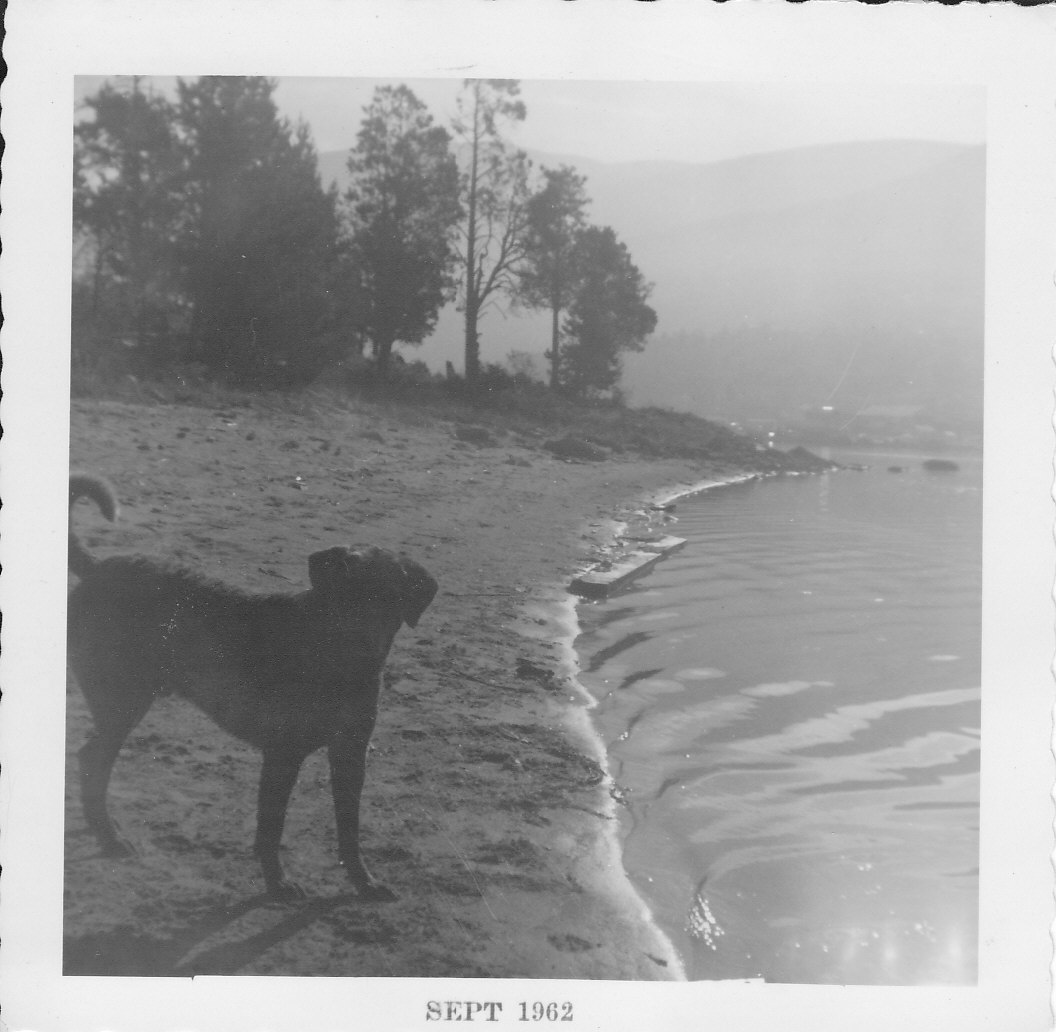
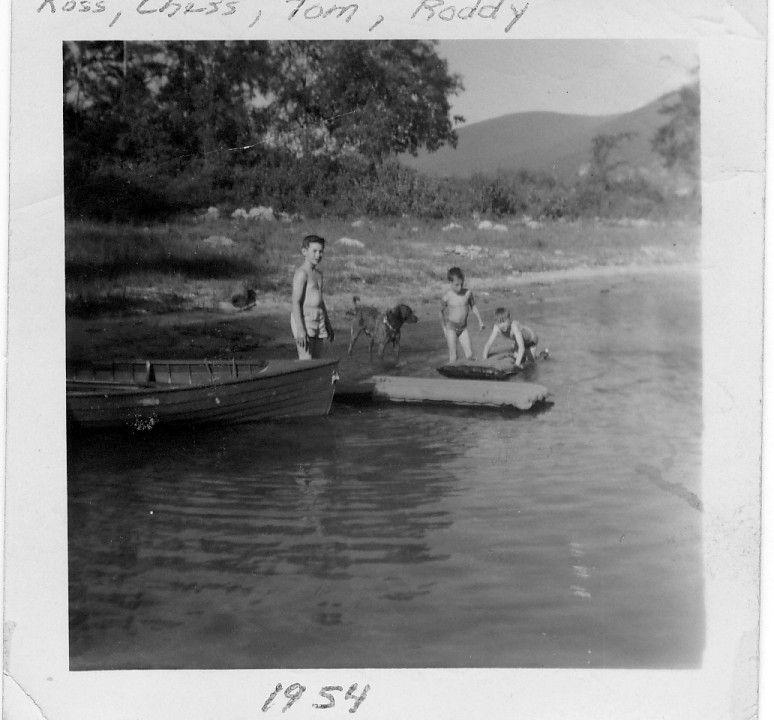
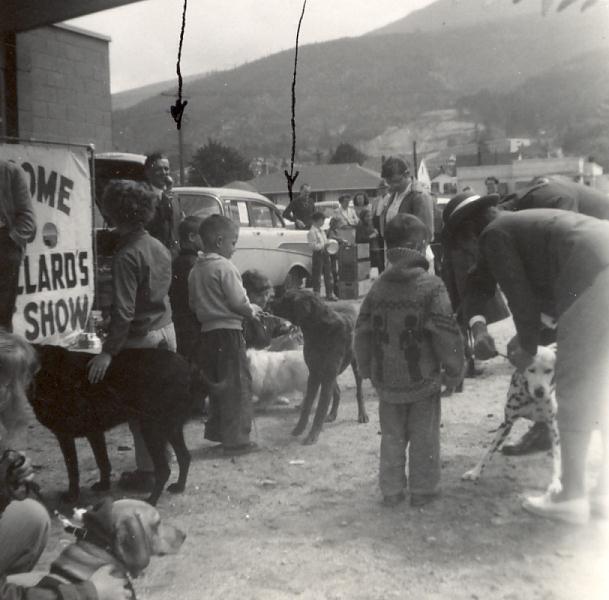
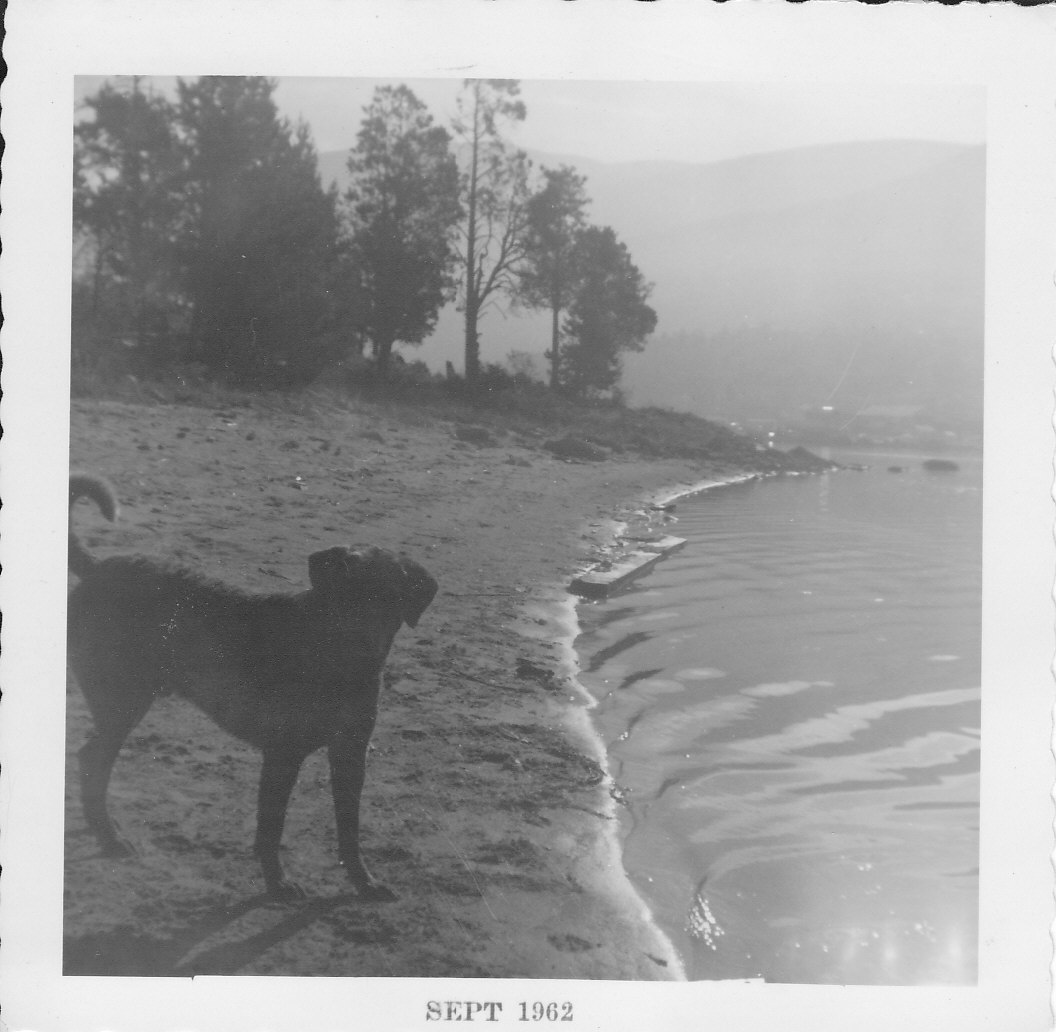
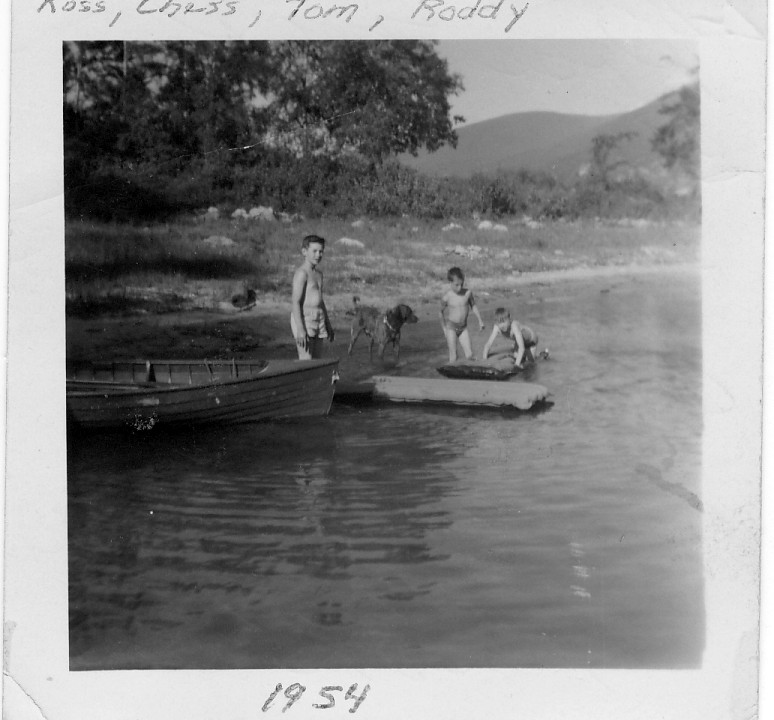
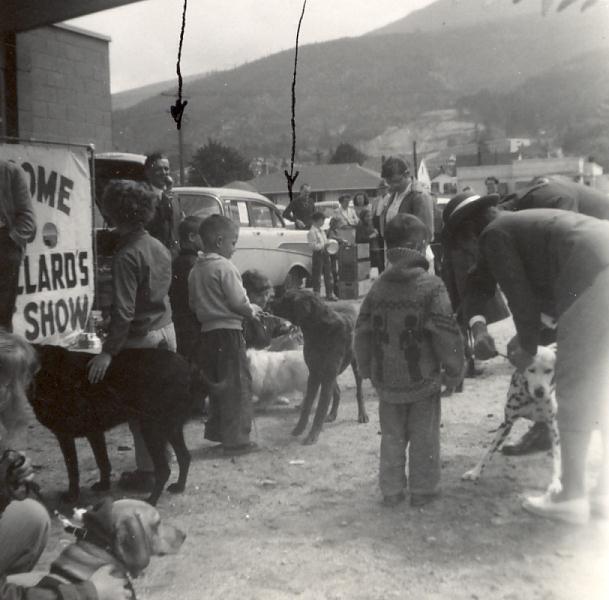
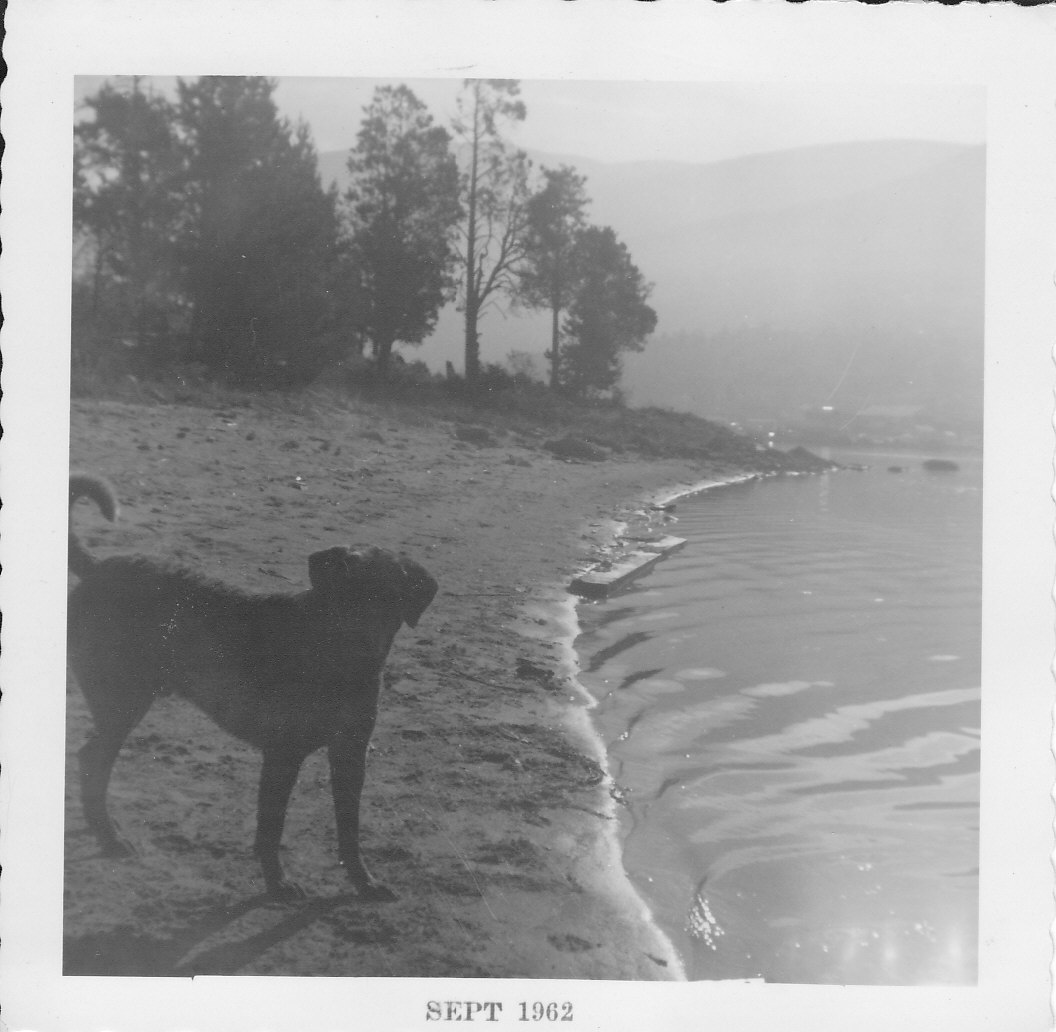
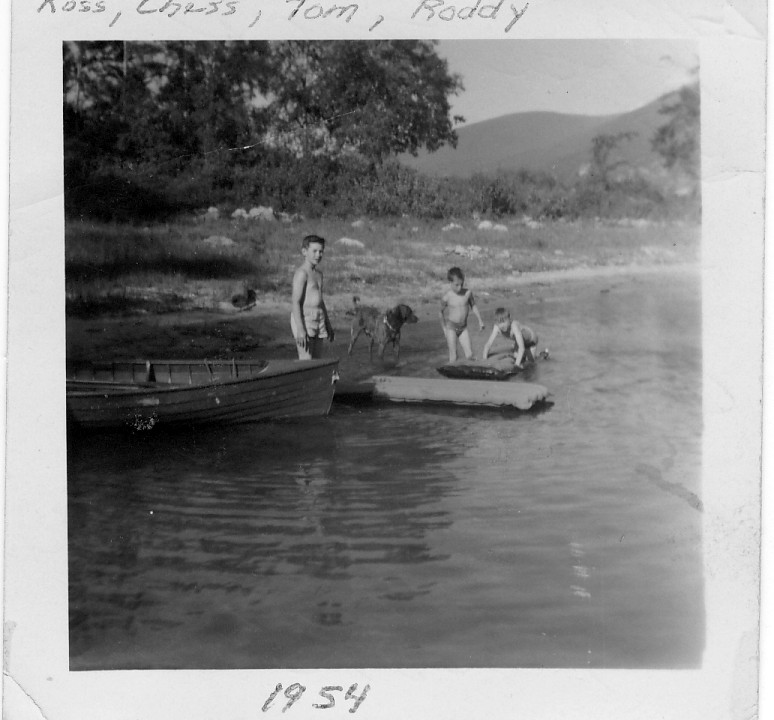
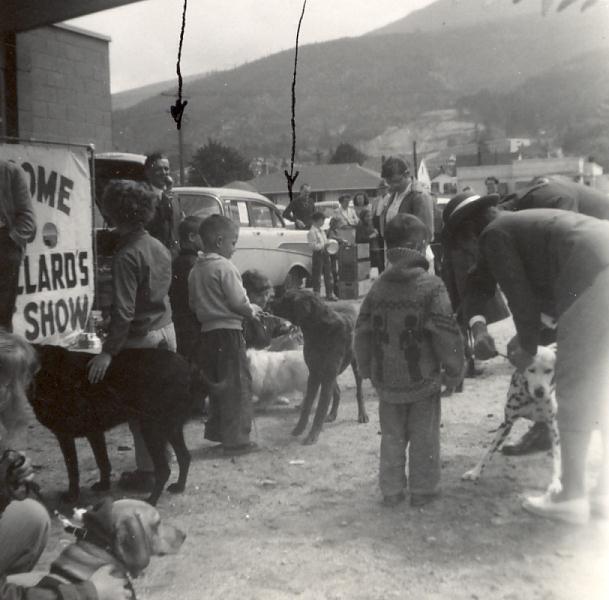
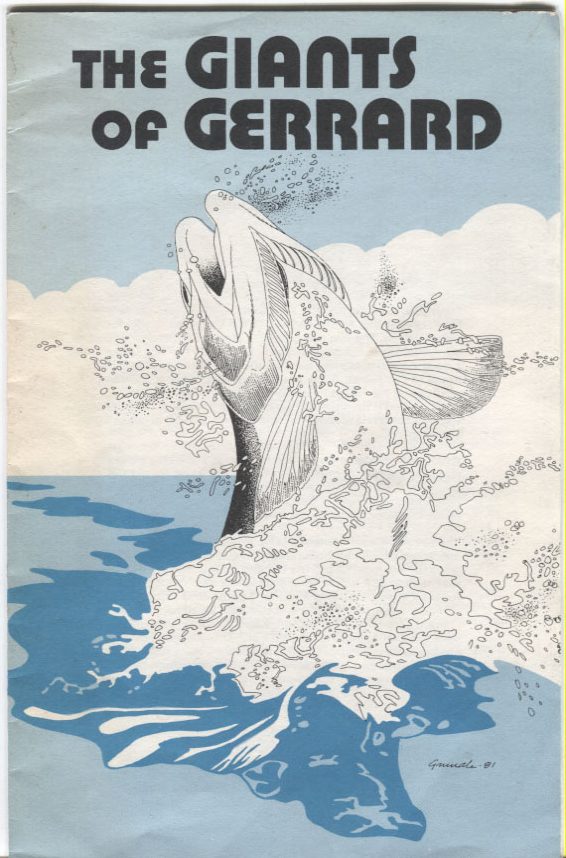
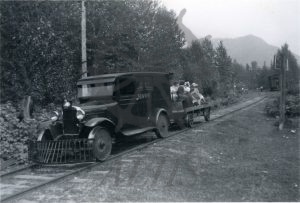
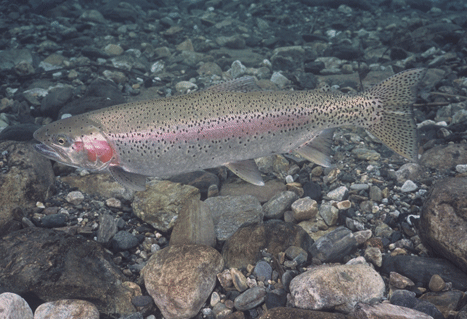
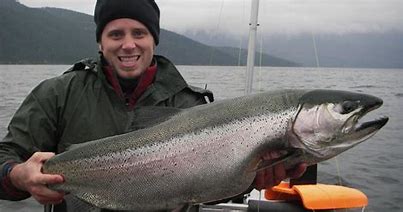
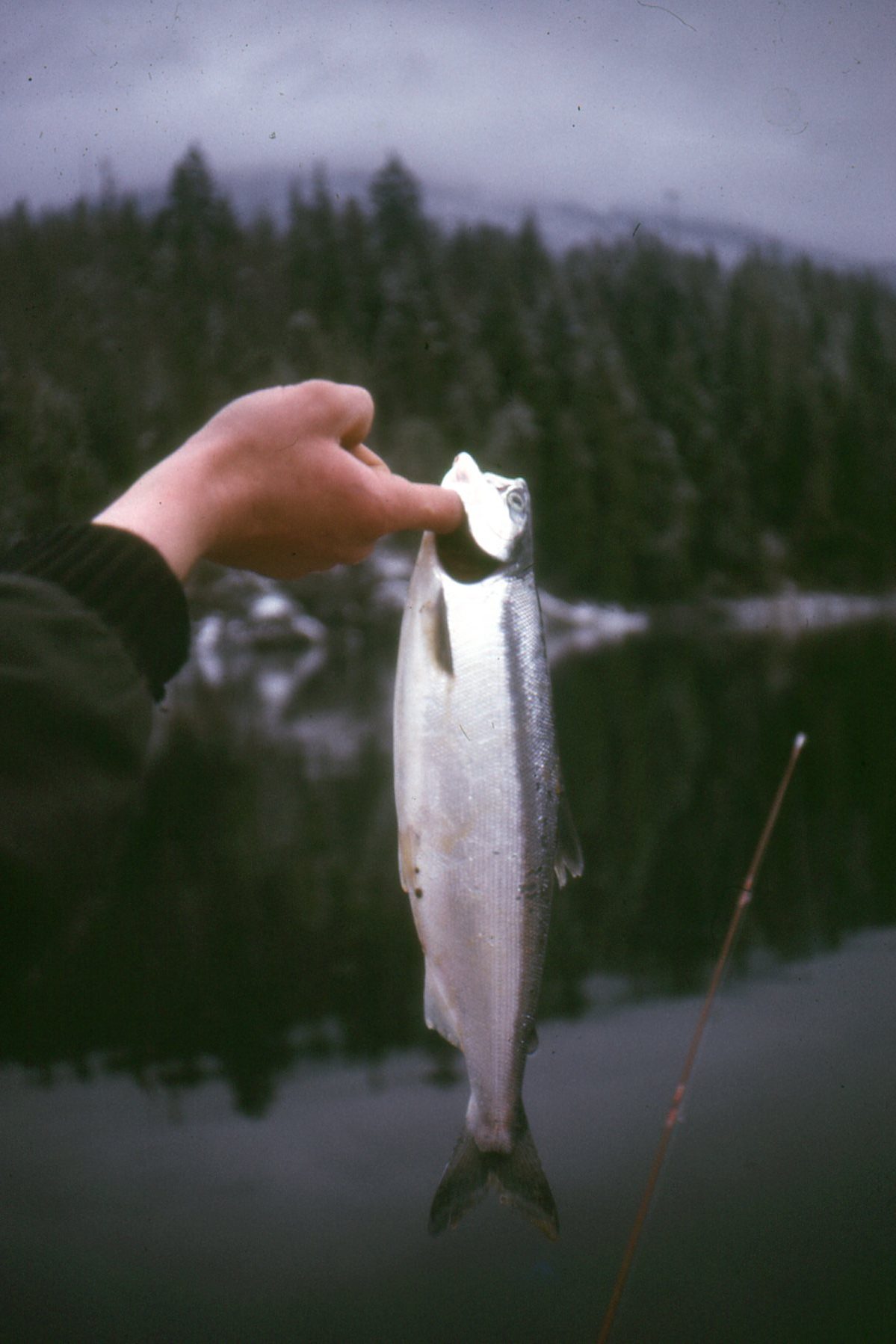
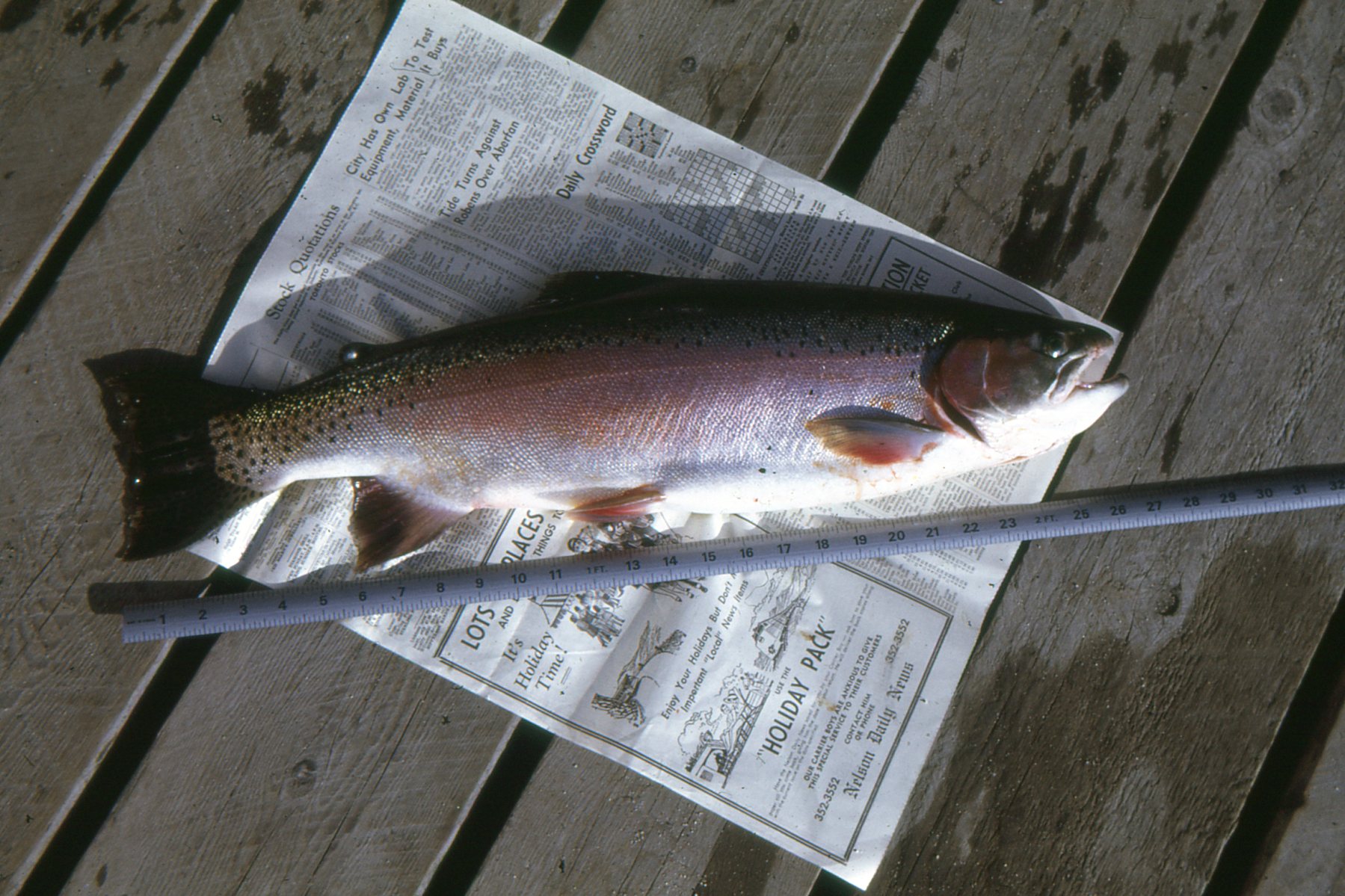
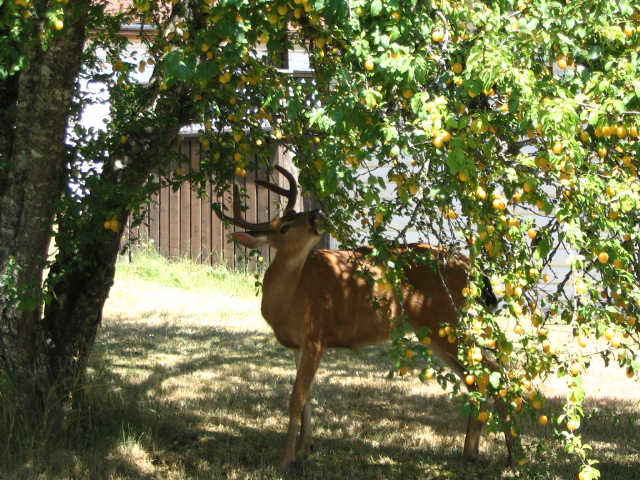
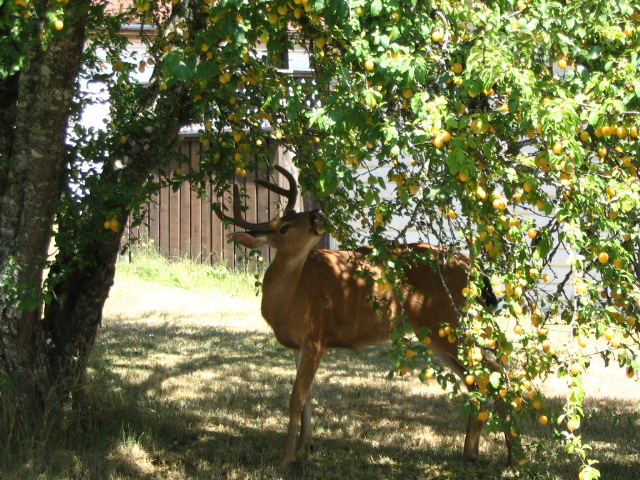
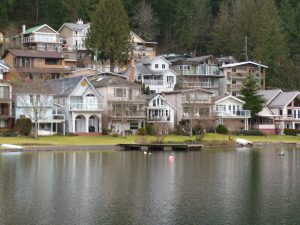
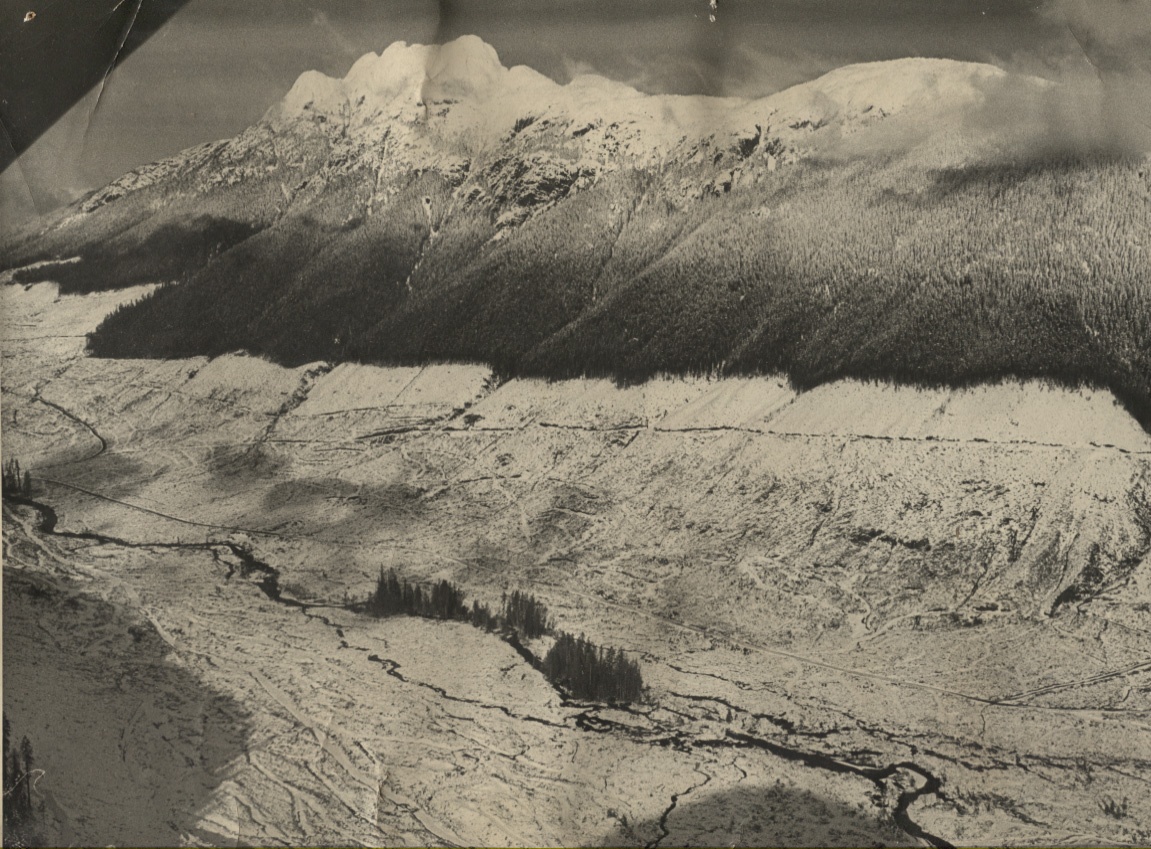
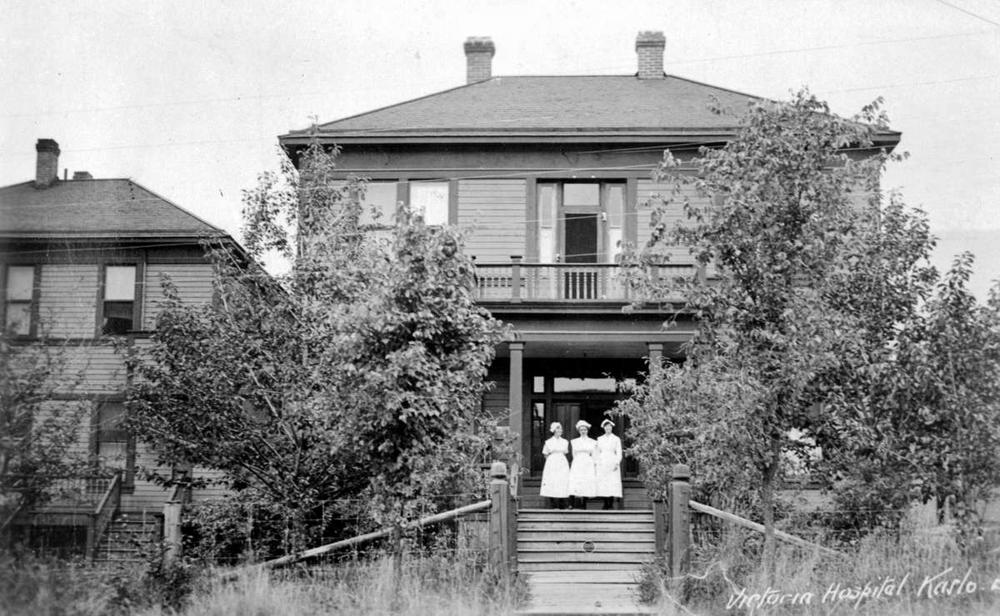 The old Victorian Hospital in Kaslo.
The old Victorian Hospital in Kaslo.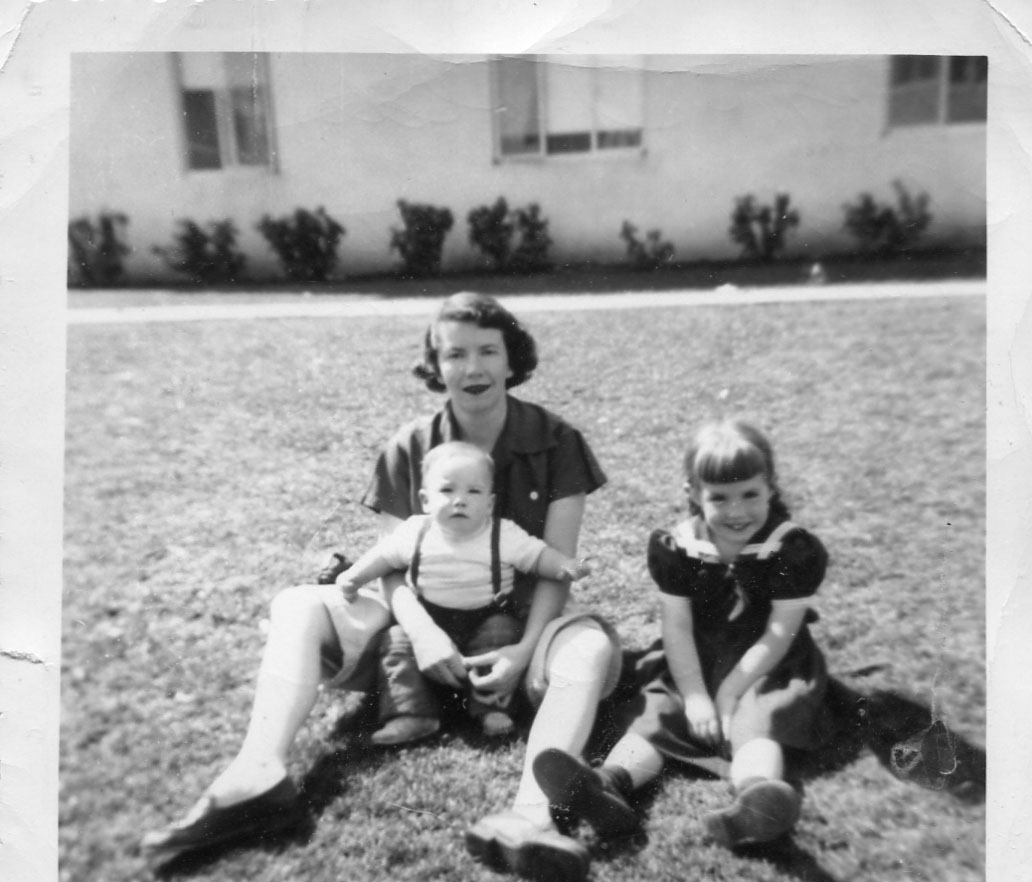
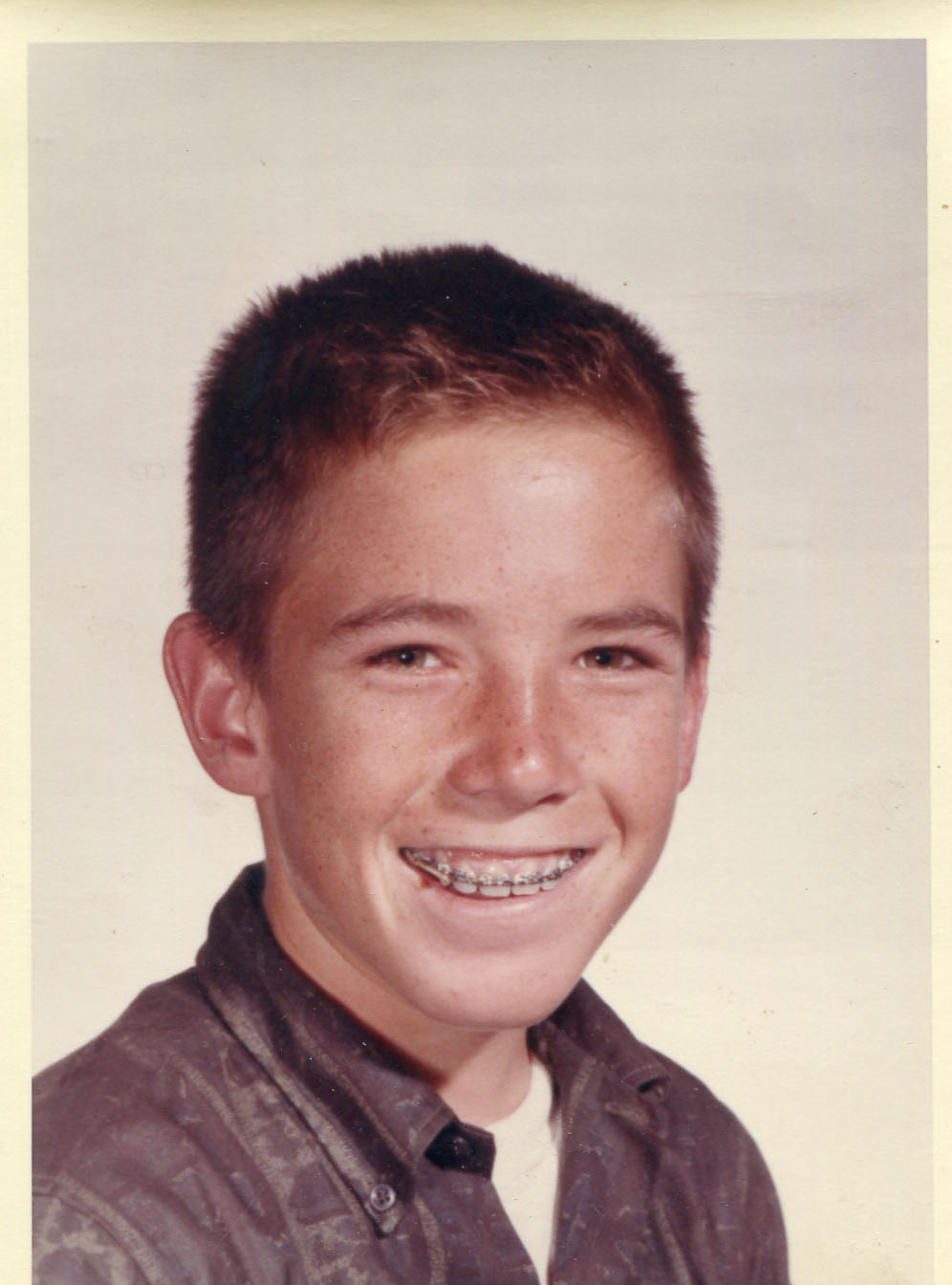
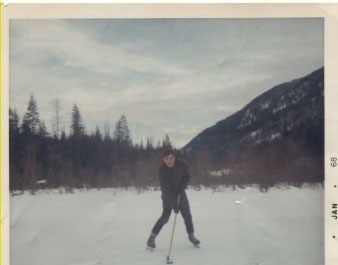
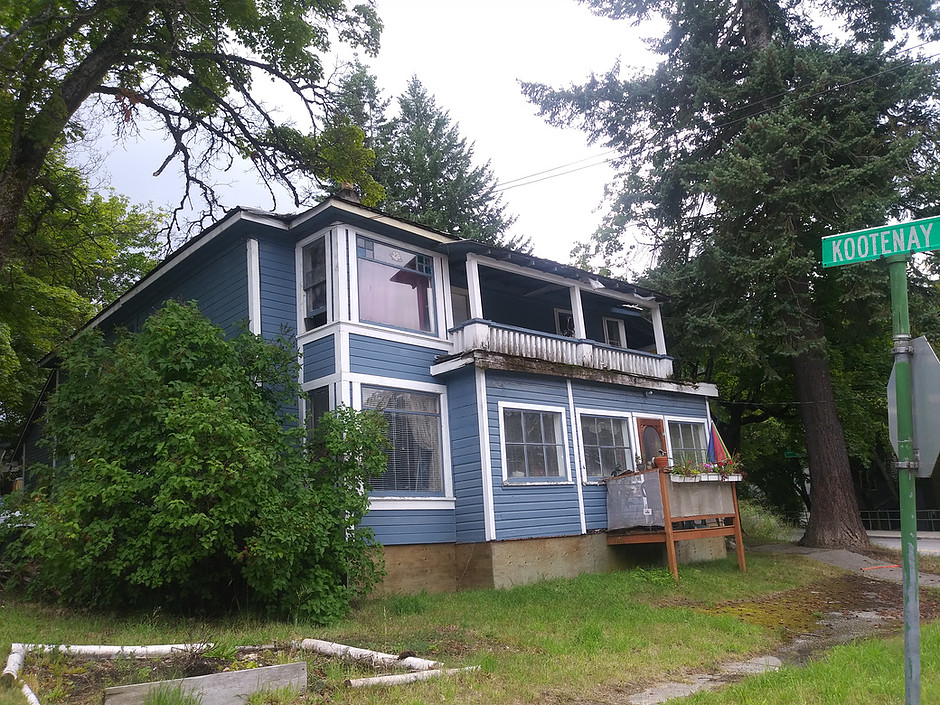
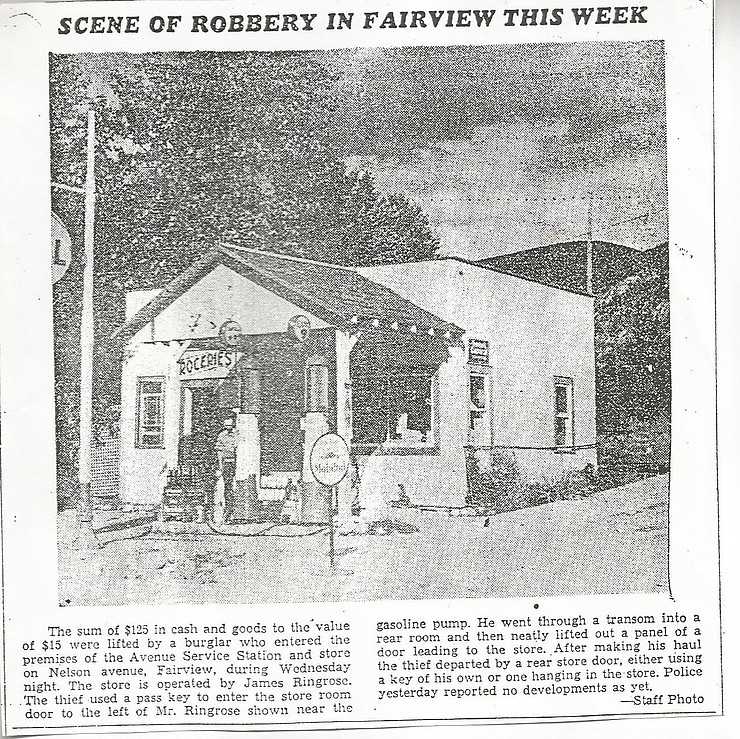
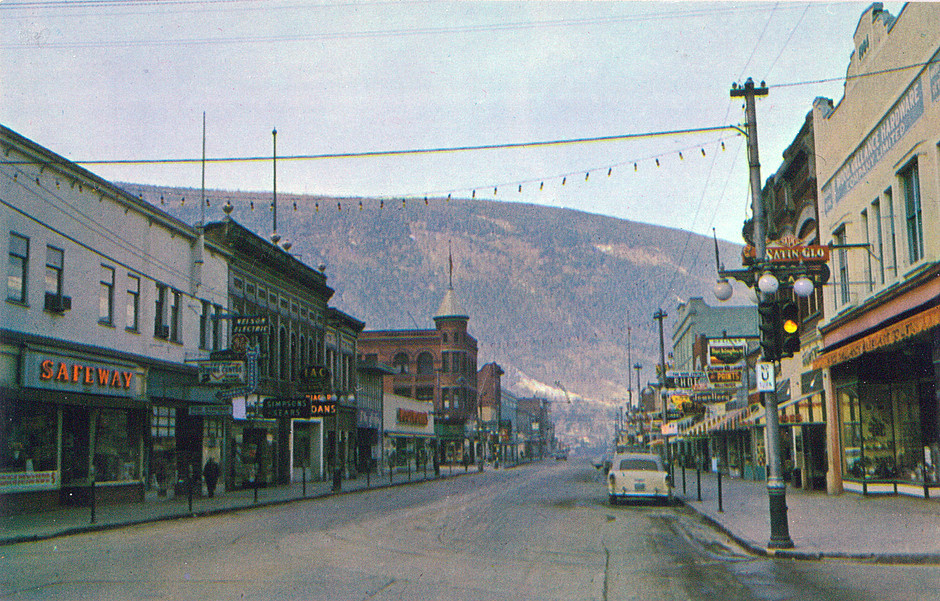
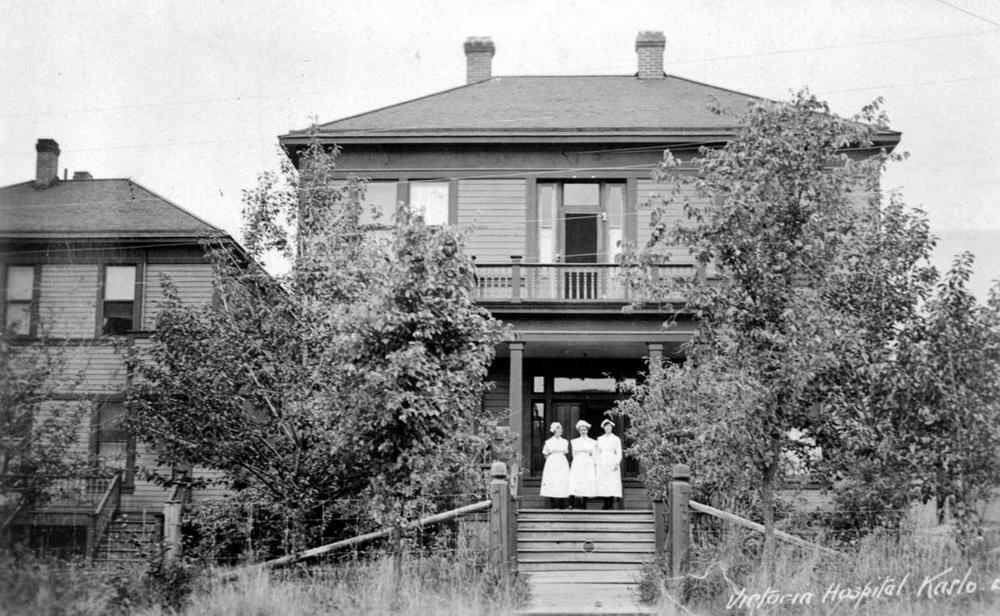 The old Victorian Hospital in Kaslo.
The old Victorian Hospital in Kaslo.